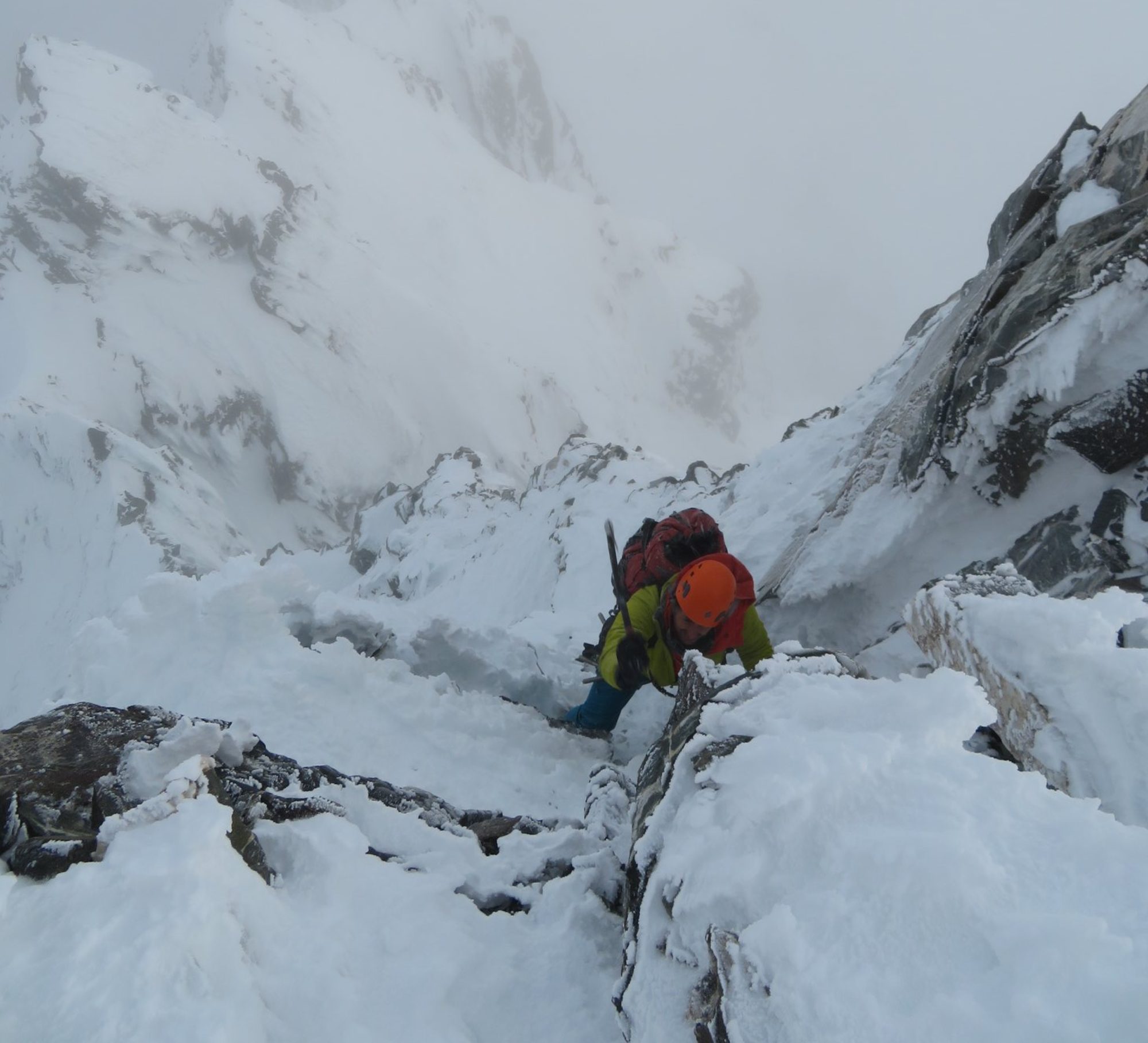An alpine mentoring experience.
Mentor = Rob Baker. 20+ years of rock, ice, and alpine experience, including many first ascents and a plethora of high-altitude summits on several continents.
Mentee = Me. Prior experience limited to a technical mountaineering course, a few ice cragging trips and some multi-pitch sport and trad rock climbing.
I was looking to develop myself and get some vertical mileage under my belt, building the alpine capability required for bigger and more committing expeditions. With his deep mountaineering experience, local beta, local contacts, sense of humour and all-around awesome attitude, Rob was the perfect mentor, and just happened to have a holiday leave schedule that aligned with mine.
With incredibly fortuitous weather (especially by New Zealand’s standards), we were able to cram a lot of climbing into a short period of time. Objectives completed within the 2 week trip included:
Hochstetter Dome (Aoraki / Mount Cook NP – 2827m)
Mount Green (Aoraki / Mount Cook NP – 2837m)
Remarkables Grand Traverse (Queenstown – 2319m)
Mount Barff (Aspiring NP – 2252m)
Days 1 to 4 – Aoraki / Mt Cook National Park and fly-in to Tasman Saddle Hut
We arrived in Christchurch at the ungodly hour of 5am on Sunday December 17th. After a quick shower and nap at the home of some Rob’s lovely friends, we shopped for 10 days worth of food, then drove to Mt Cook Village to check in to the Wyn Irwin hut (Rob happened to know the hut Warden!)
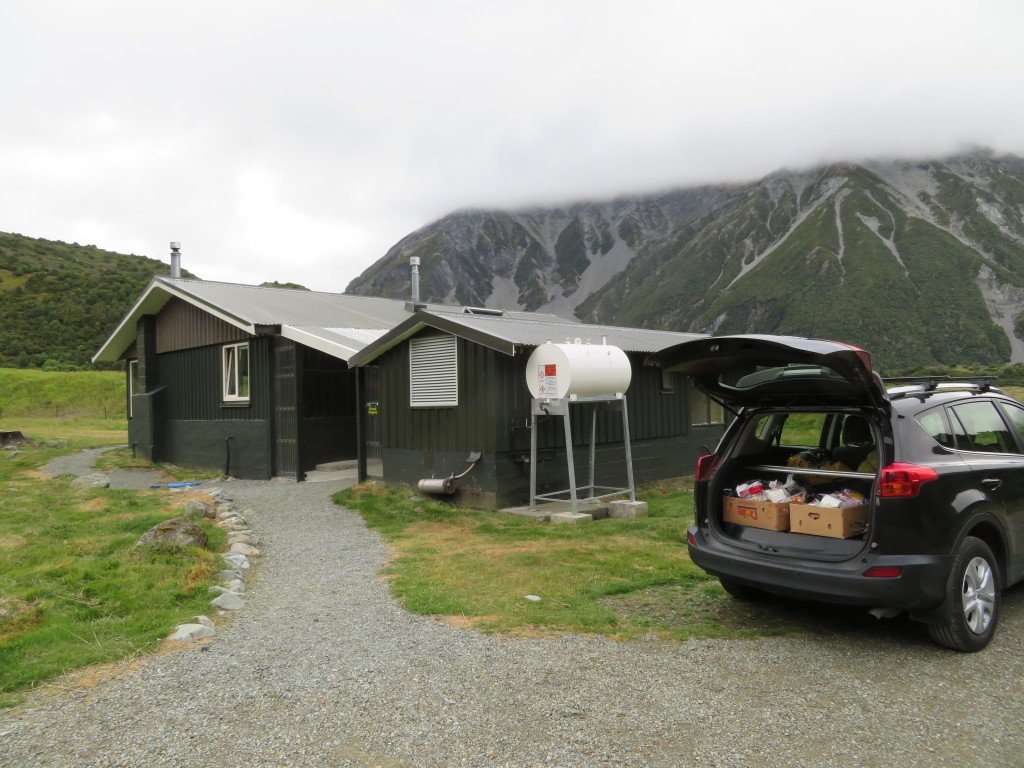
We wanted to base ourselves in Tasman Saddle Hut at the head of the Tasman Glacier, from which we could attack many different intermediate objectives. After a night’s rest we immediately went to the airport to check for flight availability. Whilst flights were available, the weather was not playing ball. We spent the whole morning waiting for the weather to clear to allow flying, however by midday as the clouds burnt up we were told that we would not be able to fit into the flight schedule that day.
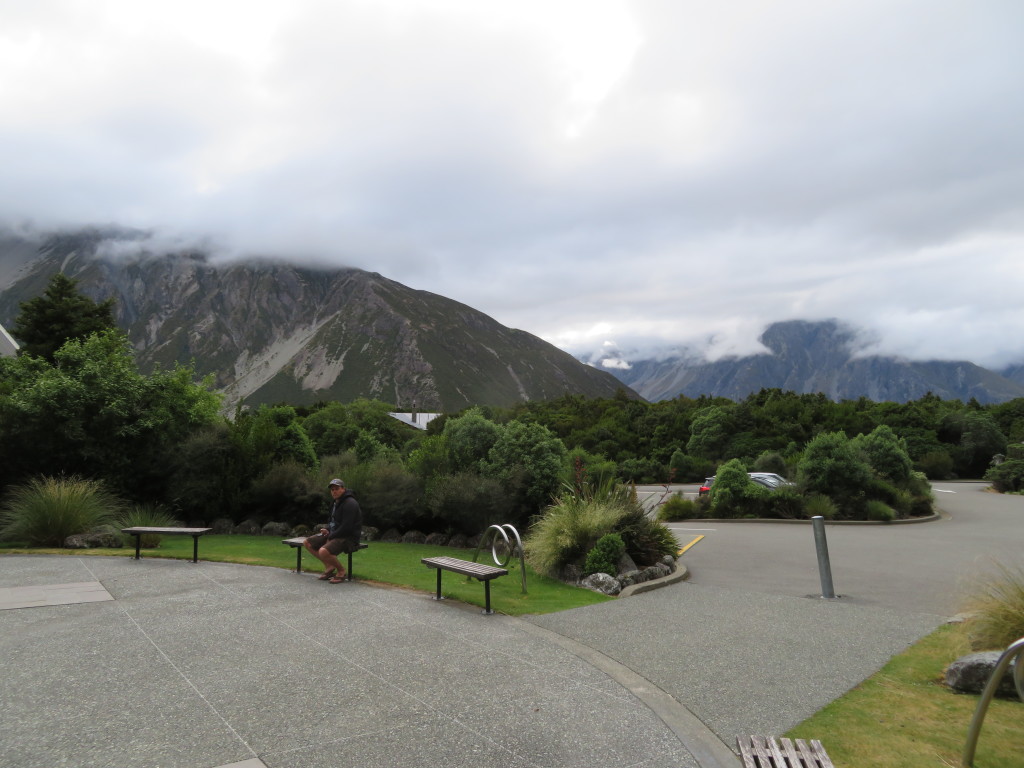

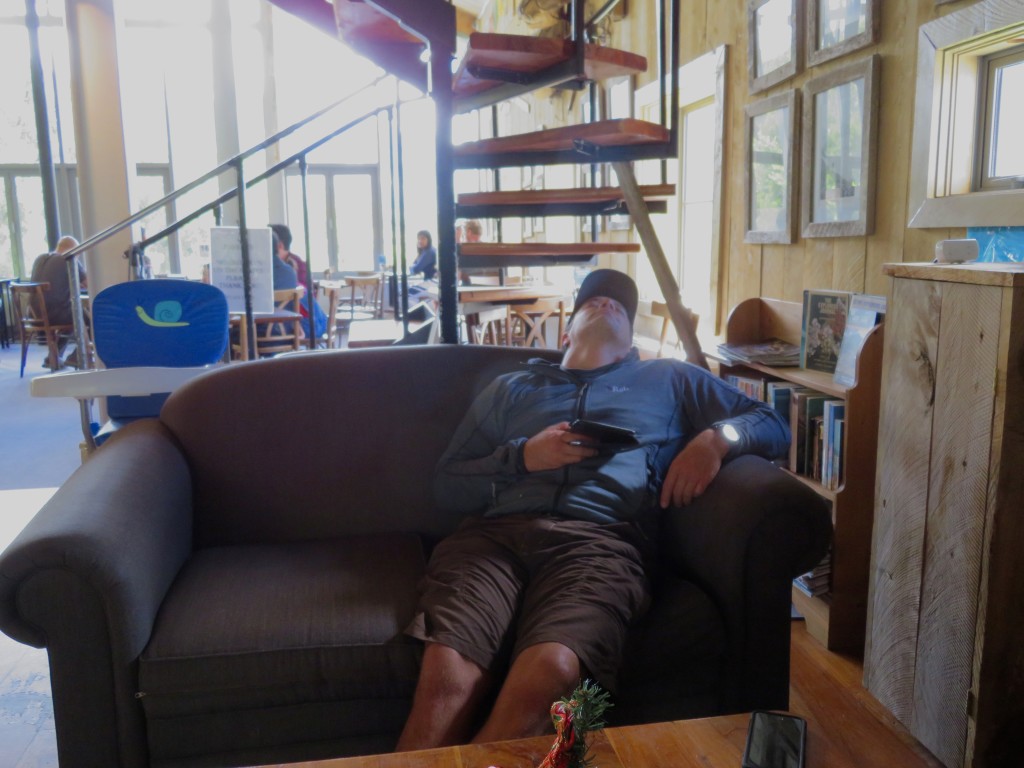
As the weather cleared we went for a stroll towards Sefton Bivvy, to give ourselves something to do. There were no flights available to us that day, and the following day was going to be a bad weather day.
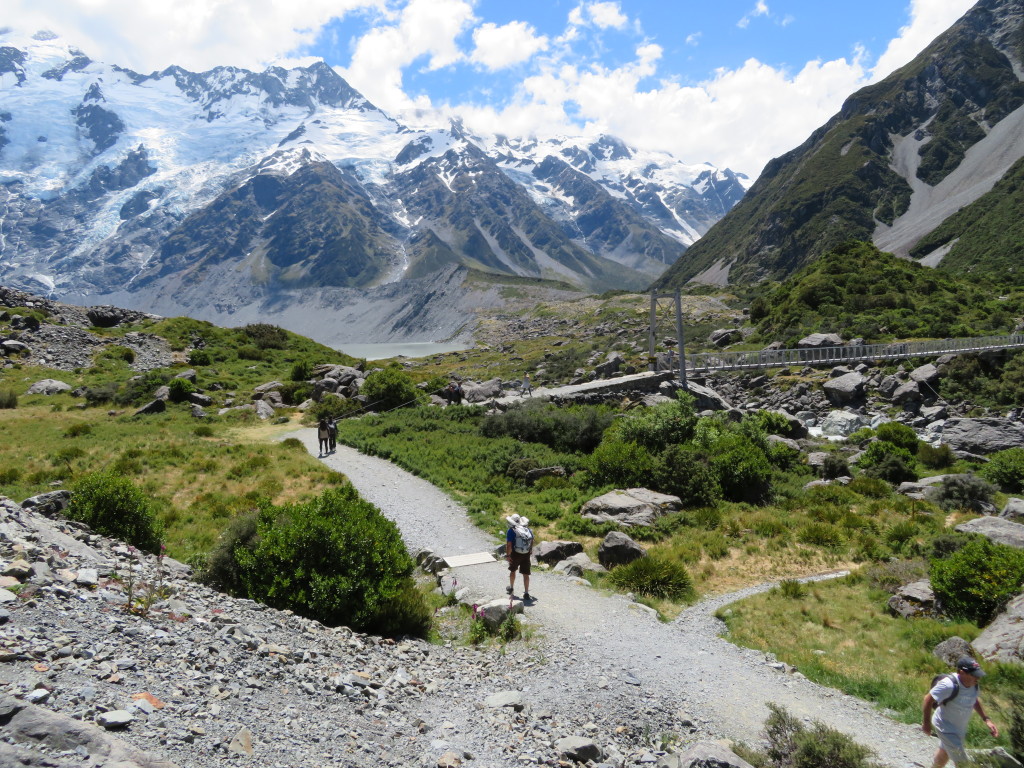
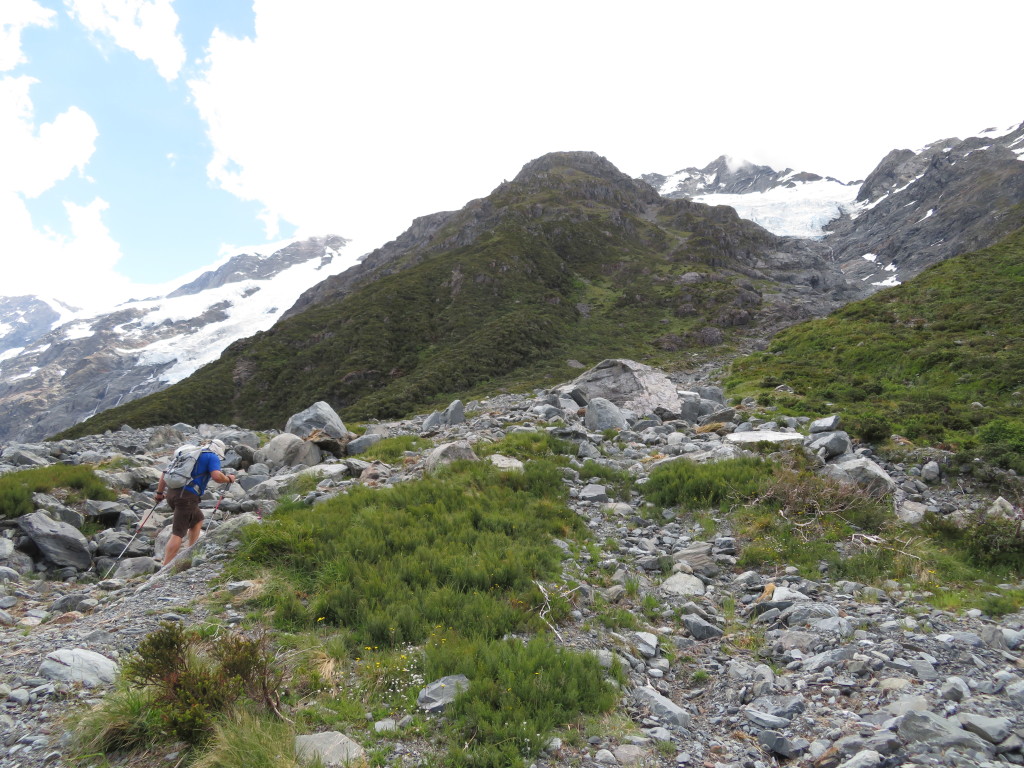
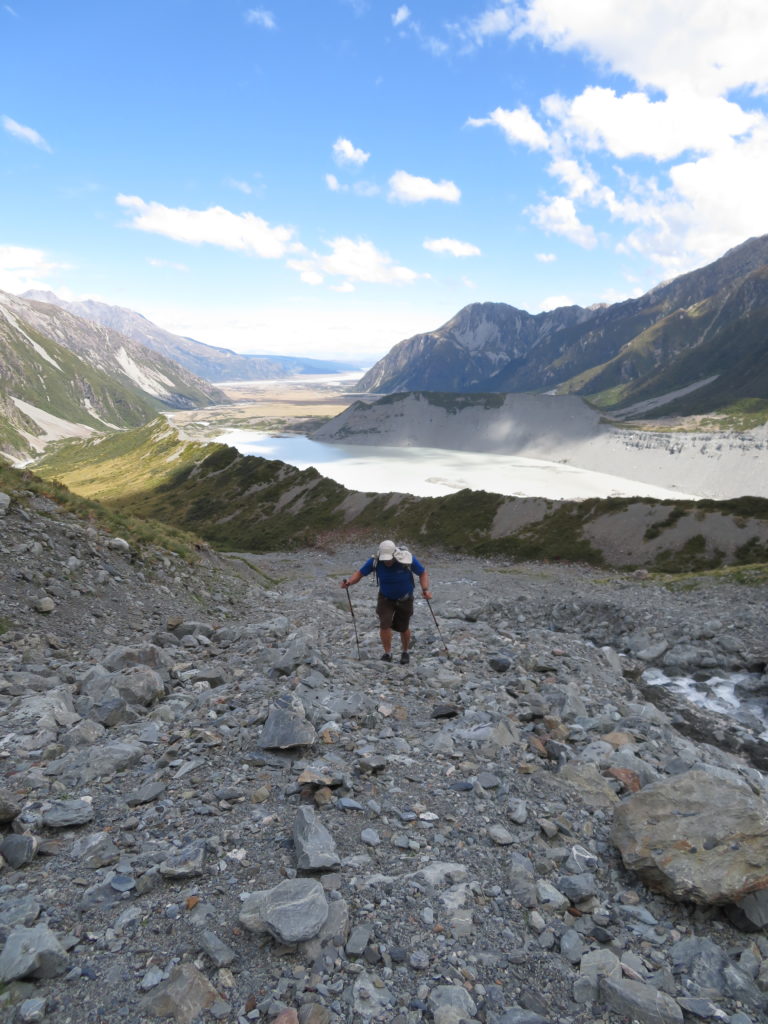
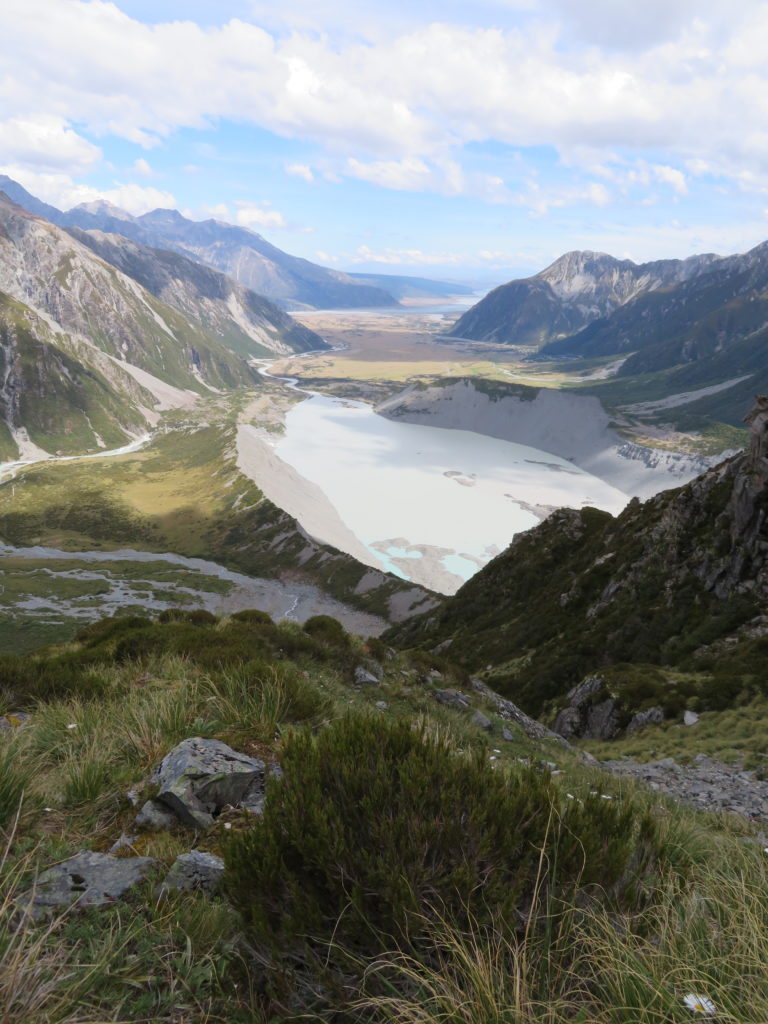
The following day was rainy and grey, so still we were unable to fly. We used the day to do some technical rope review, and also went for a drive to Lake Pukaki to grab some local salmon sashimi – probably the best I’ve ever tasted.
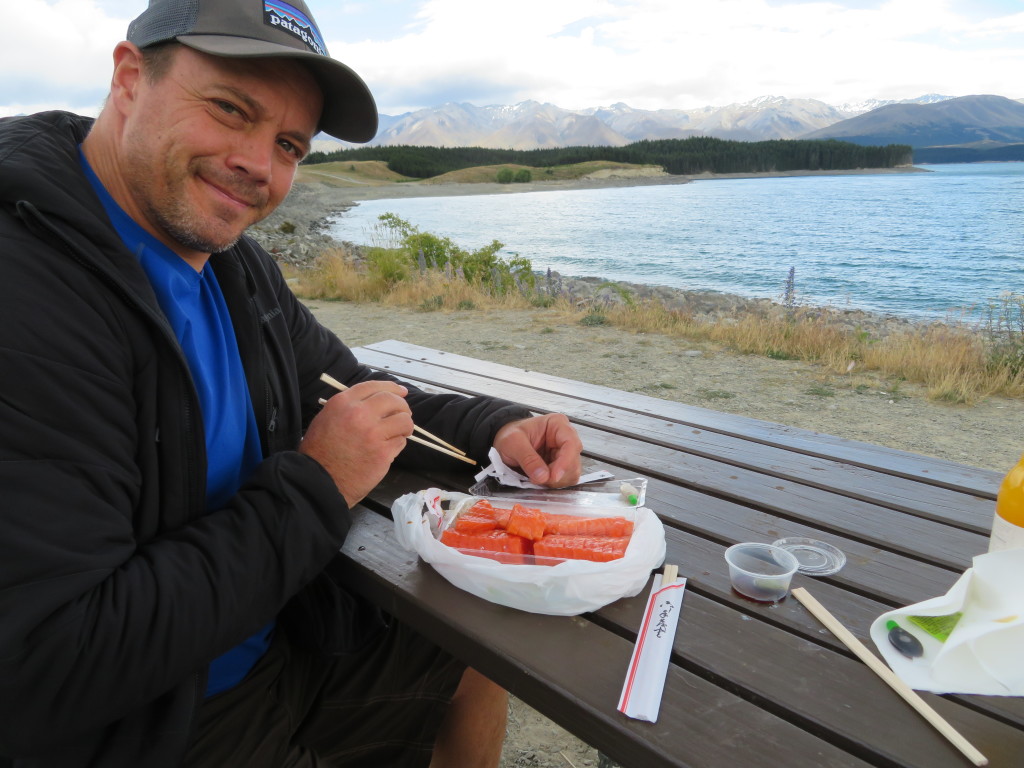

Finally, on Wednesday the 20th, we were able to fly in to Tasman Saddle Hut, sharing a back-flight with another pair of climbers Rob and Claire. The flight up the Tasman Valley was spectacular, with clear views of Aoraki, Mt Tasman, Minarets, and many other major peaks.
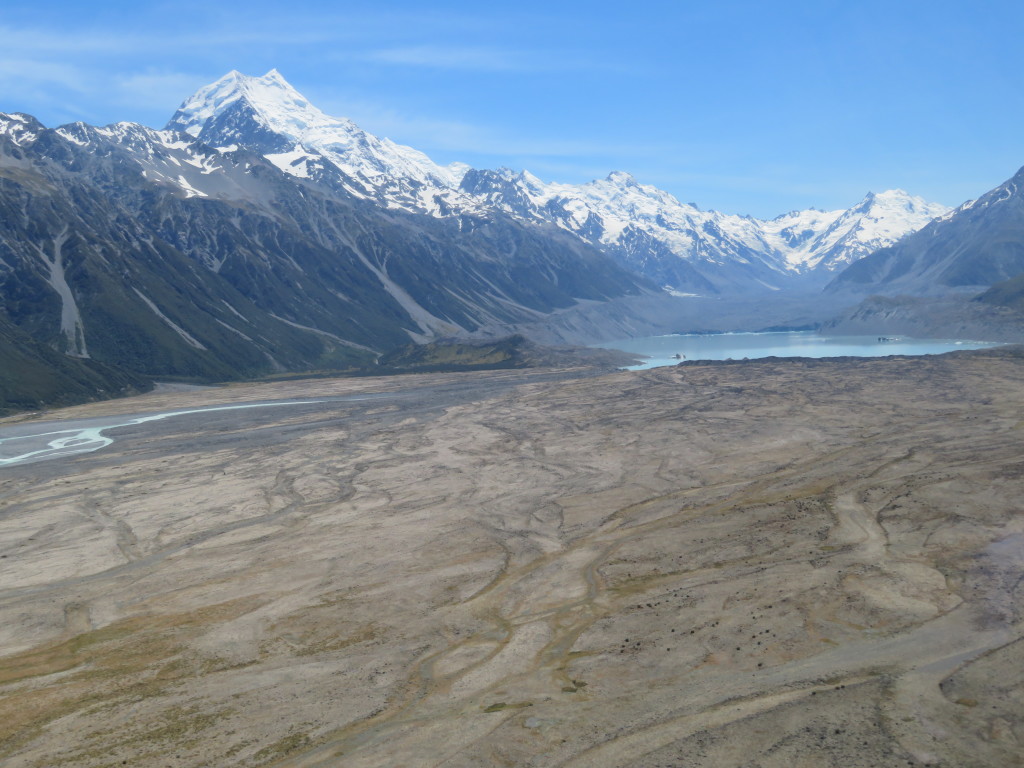
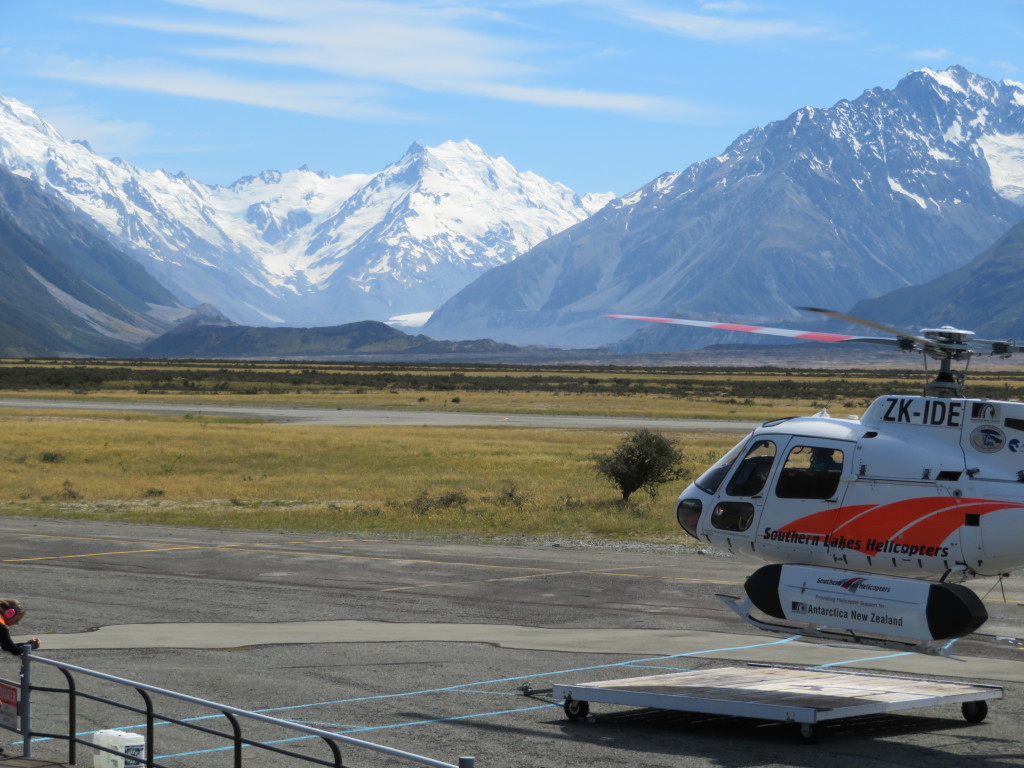


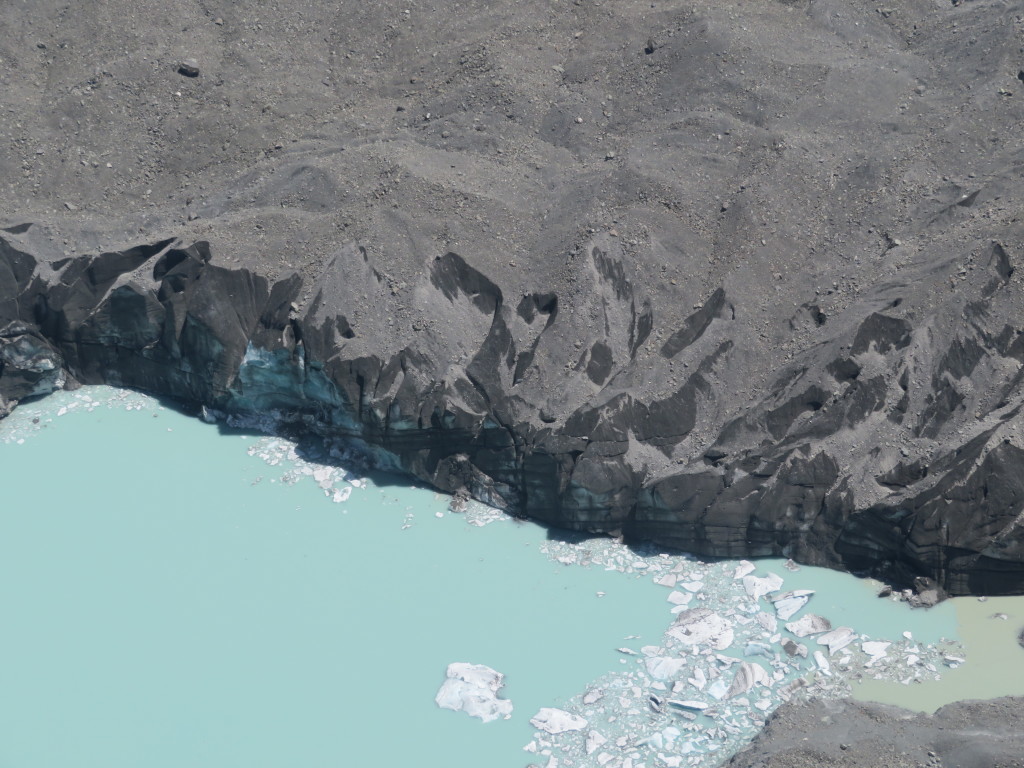


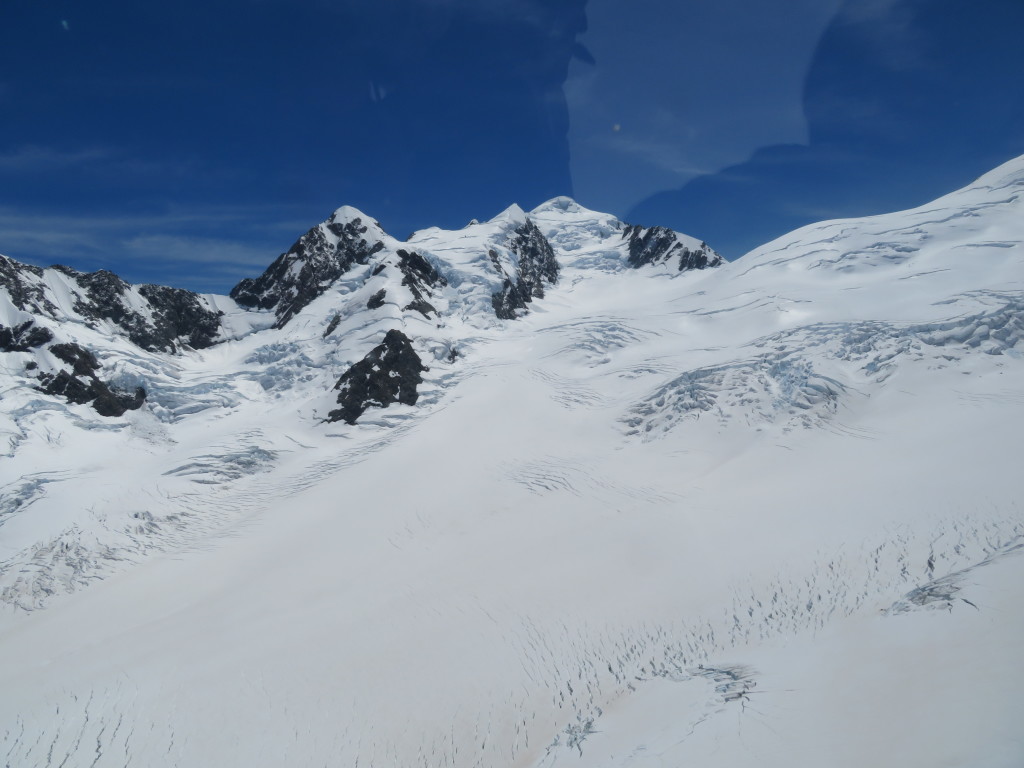
Day 4: Objective 1 – Hochstetter Dome (2827m)
Once landing and safely getting our gear and food supplies into the hut, Rob and I immediately roped up to cross the glacier and ascend Hochstetter Dome, which sat right behind the hut at the head of the Tasman Glacier. The weather was perfect, but the snow bridges across the bergschrunds were a little thin and difficult to find. Still, we were able to find a way onto the southeast shoulder, ascend to the summit, then descend the northwestern shoulder and return to the hut within about 4 hours.


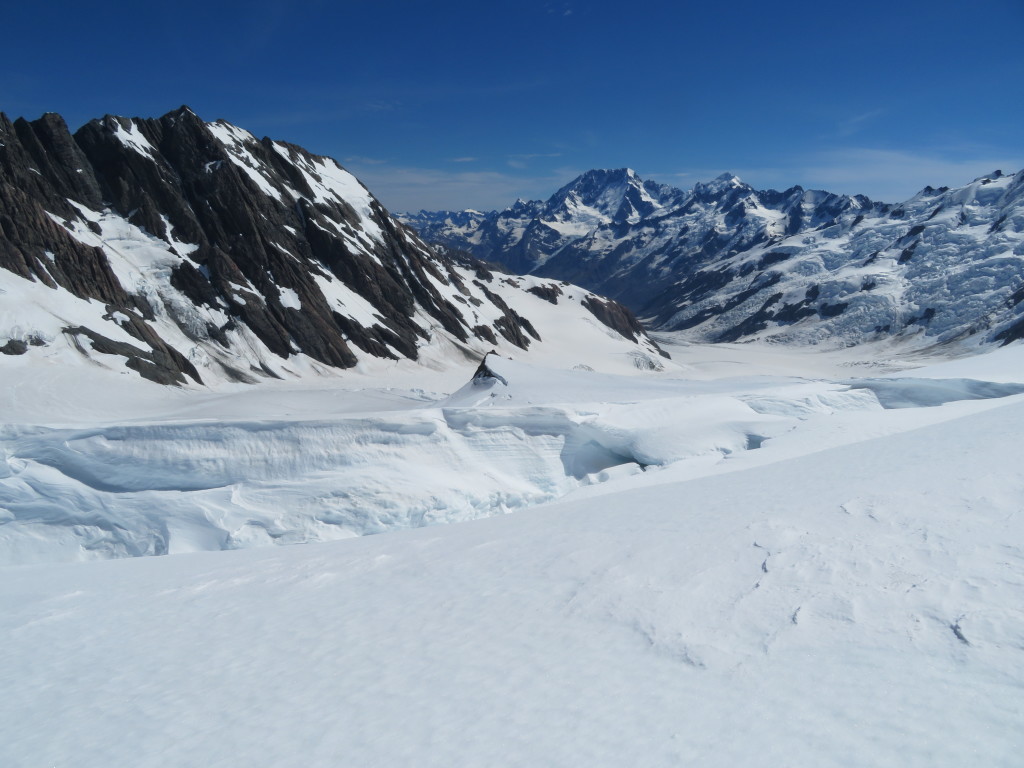
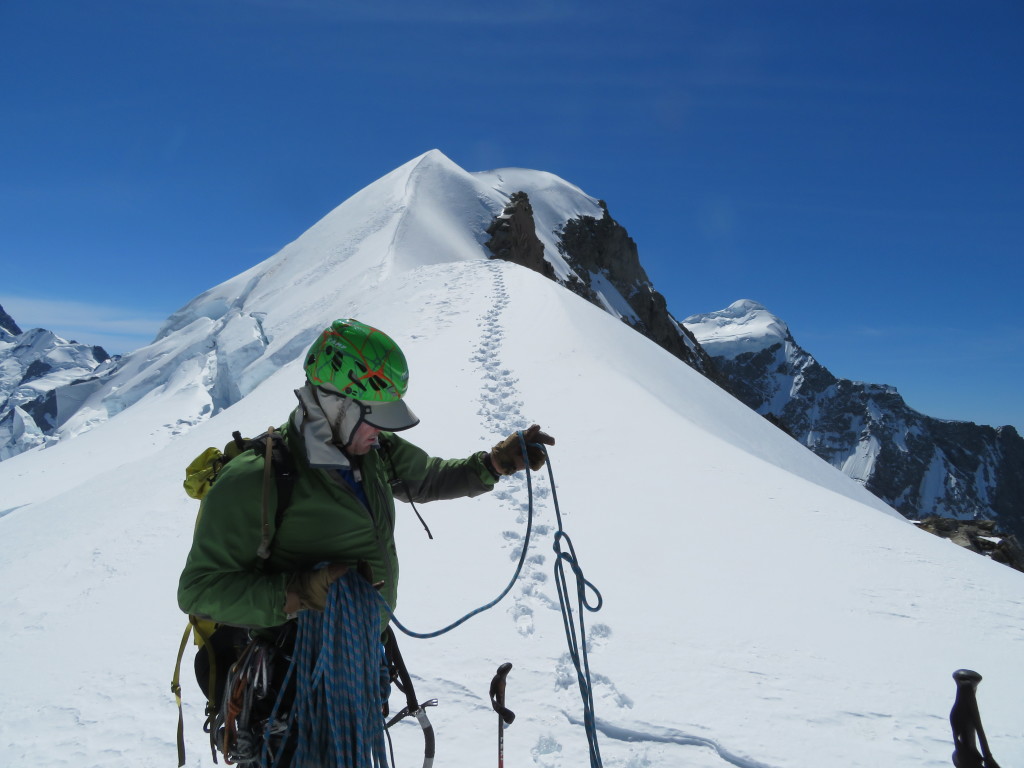
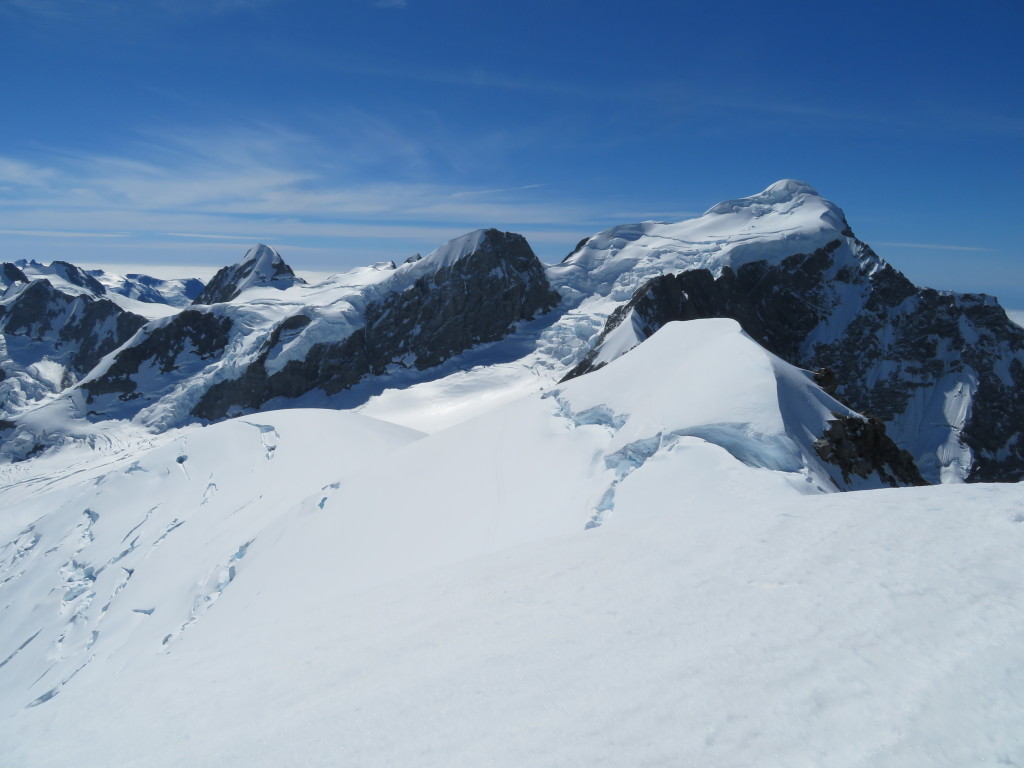
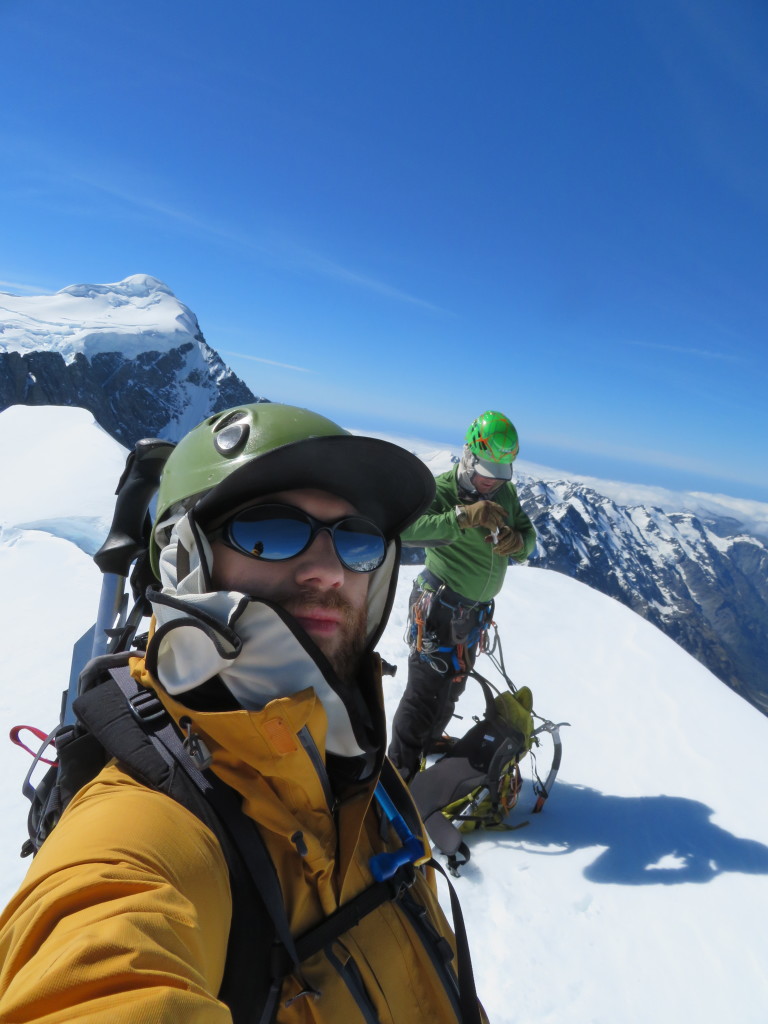
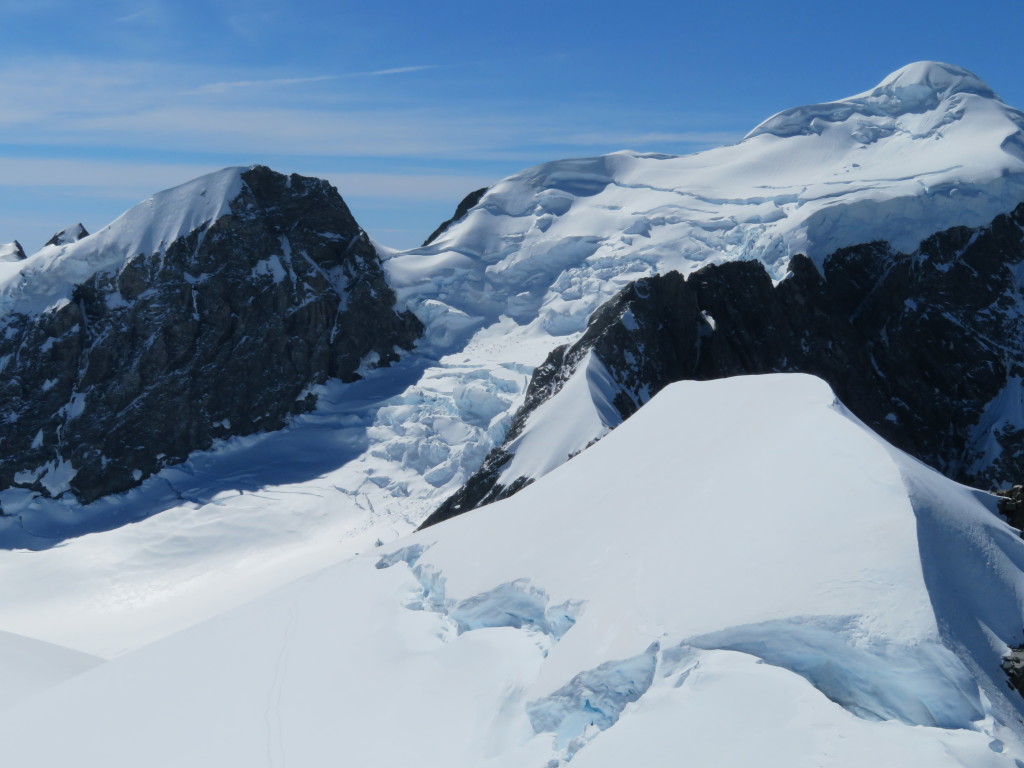
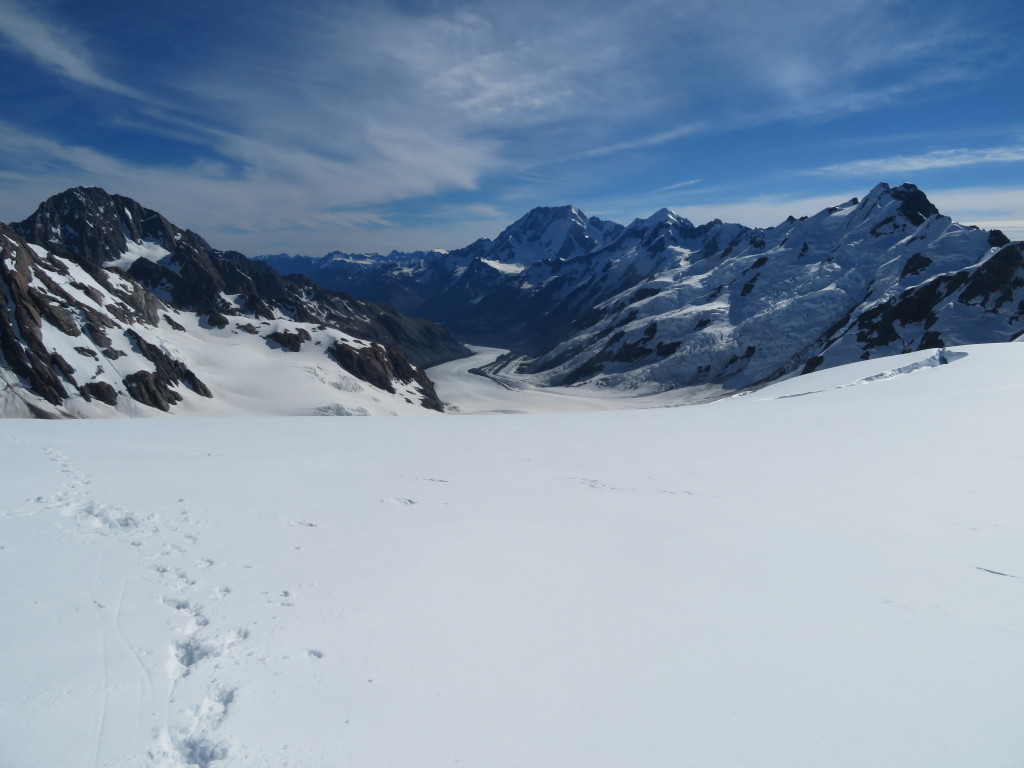
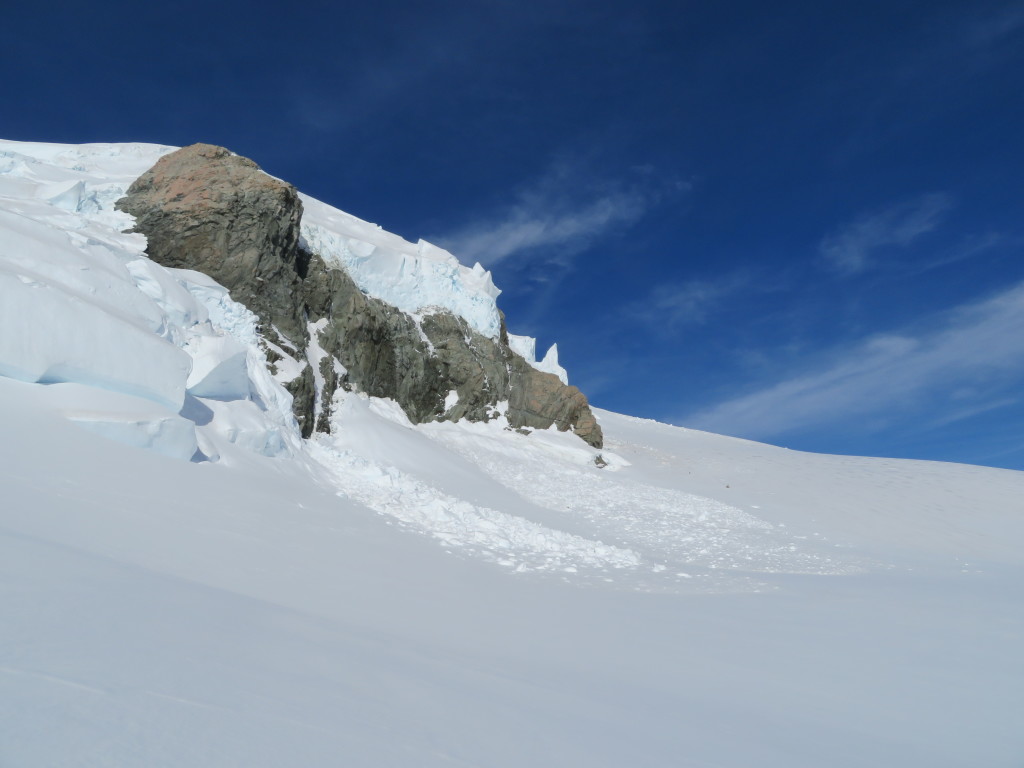
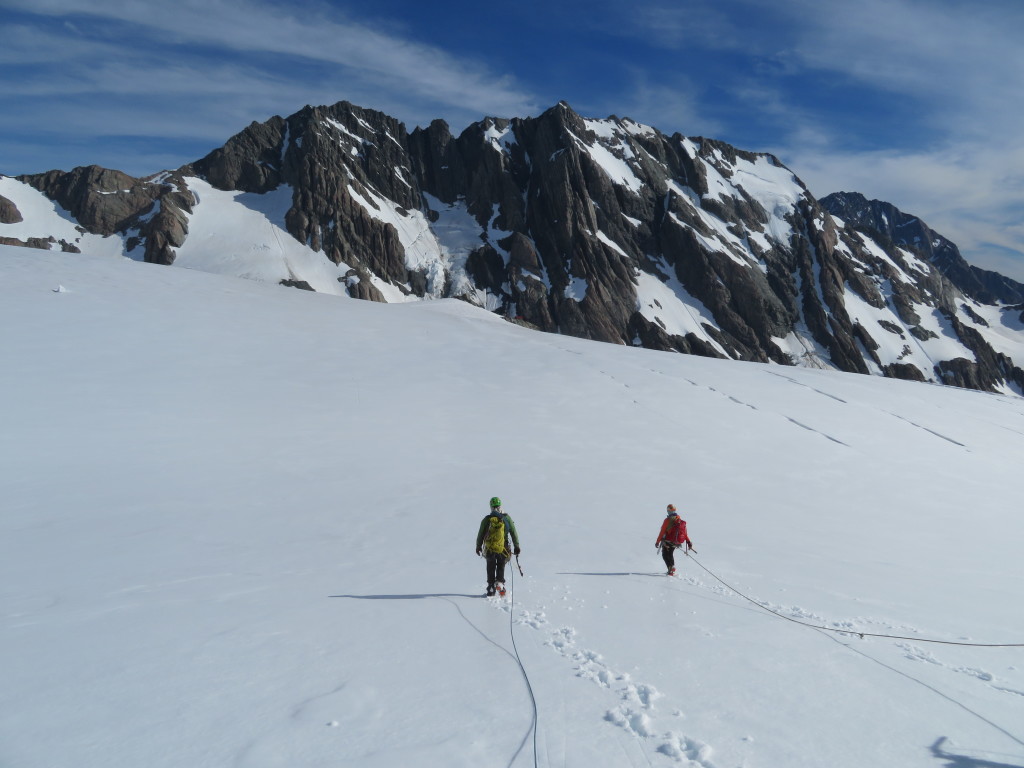
Our new temporary home of Tasman Saddle Hut was extremely cosy, and had cracker views. We shared the hut with Rob and Claire, as well as a guided party of 2, Lydia and Eddie.
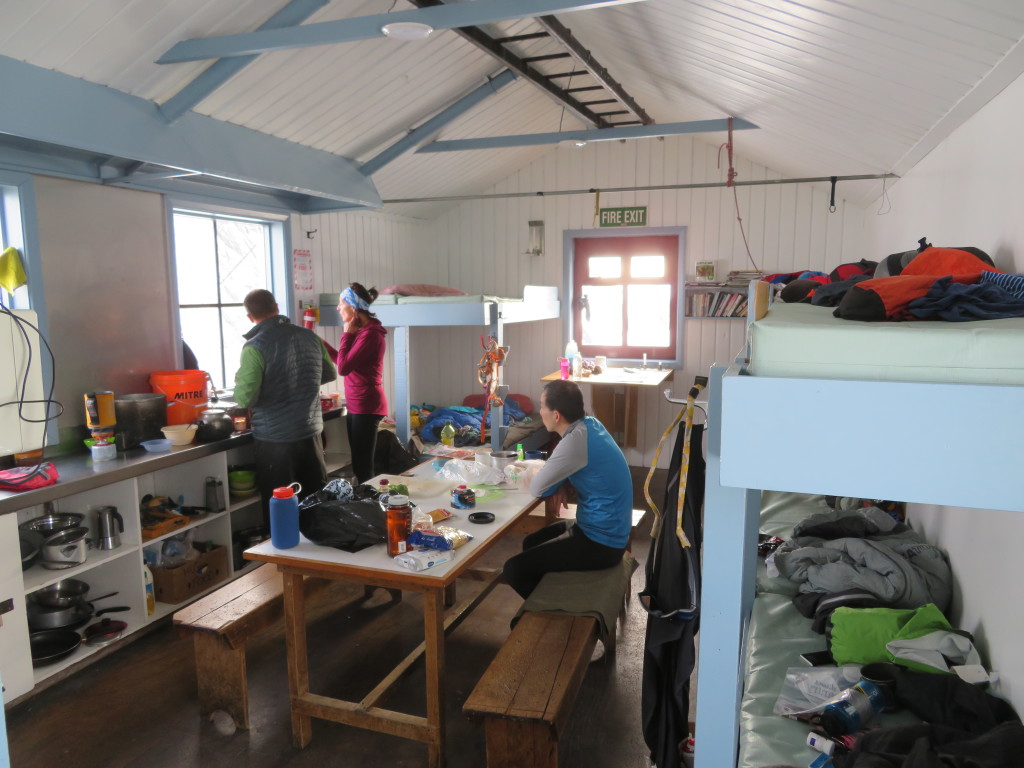
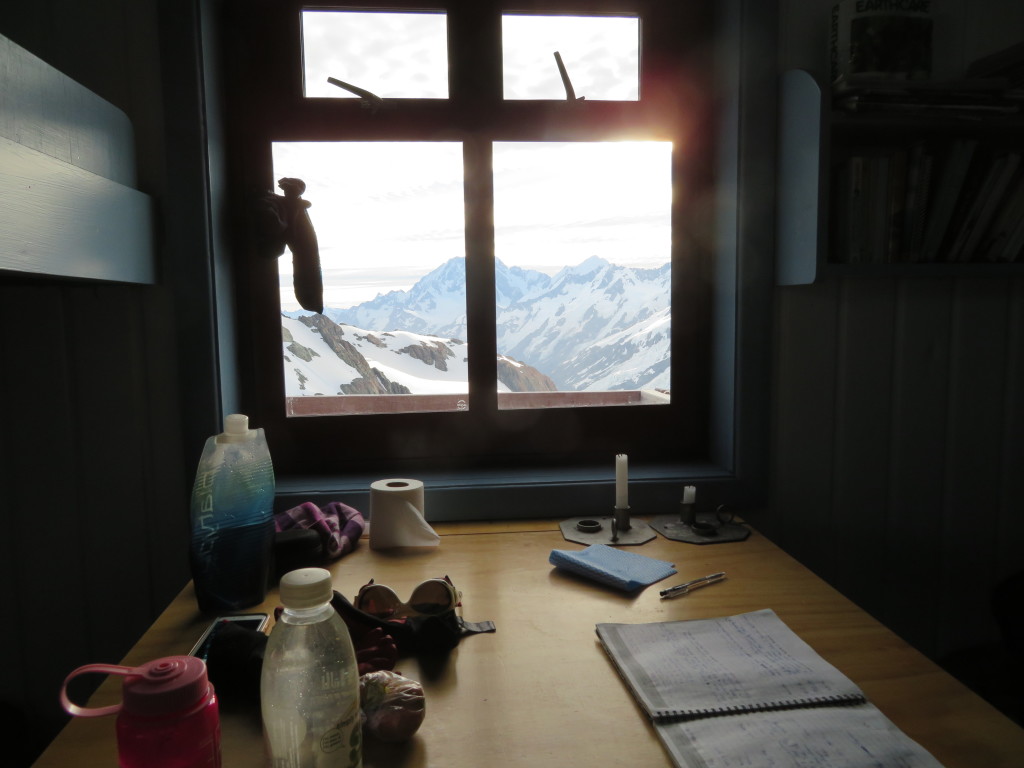

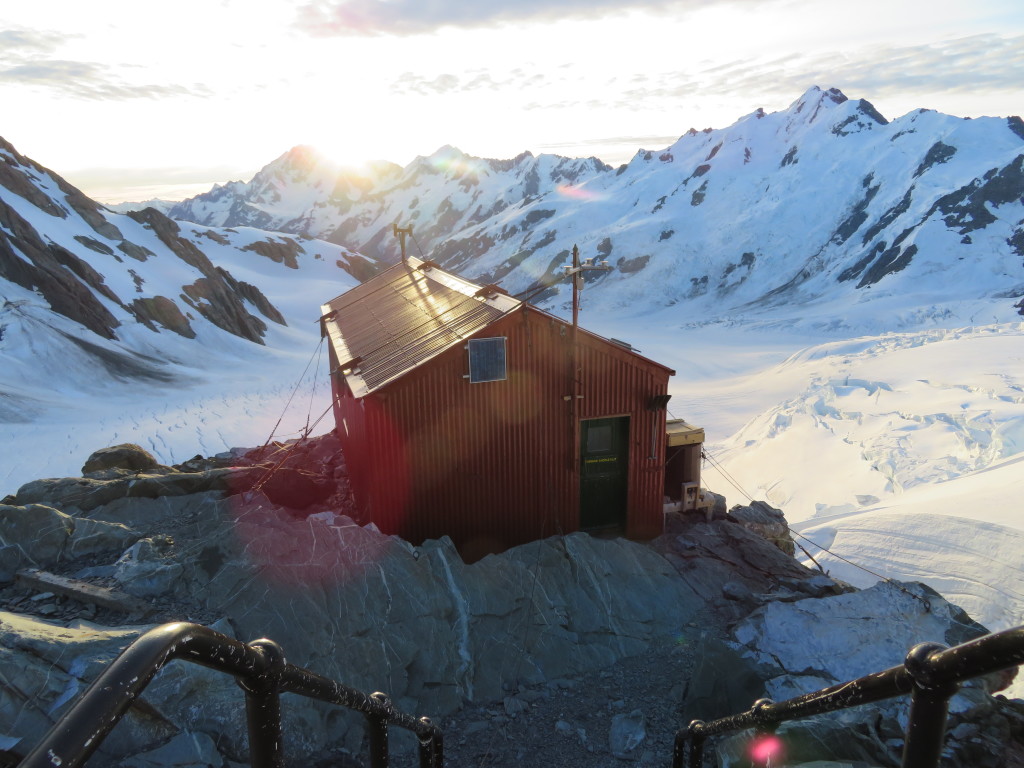
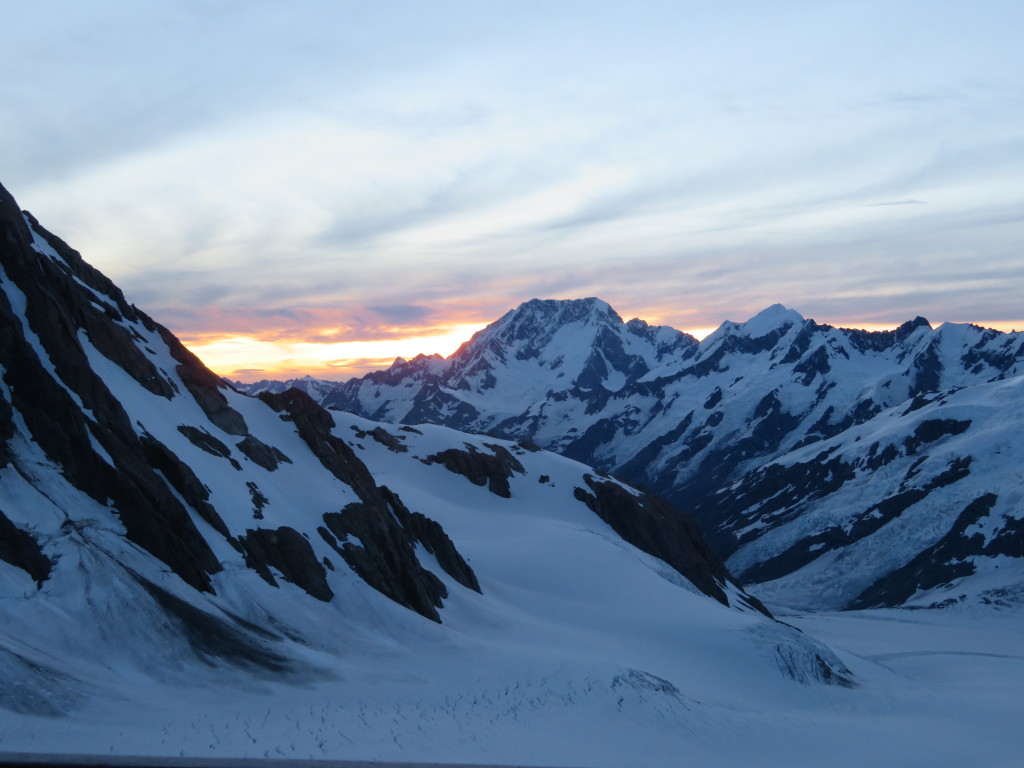
Days 5-7: Objective 2 – Mt Green (2837m)

With a half bad weather day on the Thursday, we rested and chatted with our new hut-mates. The hut banter was hilarious (I never thought talk of capsicums could be funny – this joke was mostly at my expense…), we couldn’t have scored better company in our new base!
By the afternoon the wind and rain was beginning to die down, so 3 of us roped up to cross the Tasman Glacier to see if there was a viable route up Mt Green. Rob (Baker), Rob (Frost) and myself found that there did indeed appear to be a good access to Mt Green with plenty of snow bridges, whereas the adjacent Mt Walter and Elie de Beaumont did not look climbable. We would have to pass through a dangerous bowling alley beneath some ceracs, but fortunately this “mad mile” didn’t last for very long.


Having satisfied ourselves that there was a passable route up Mt Green, and with a favourable weather forecast for the next day, we went to bed early to enable a 3.30am alpine start on Friday. Rob and Claire followed Rob and myself towards Mt Green under starlight. The snow was frozen and crisp, enabling swift crossing of the glacier. We crossed the “mad mile” and got to the first big bergschrund just as day was breaking – with beautiful alpenglow.
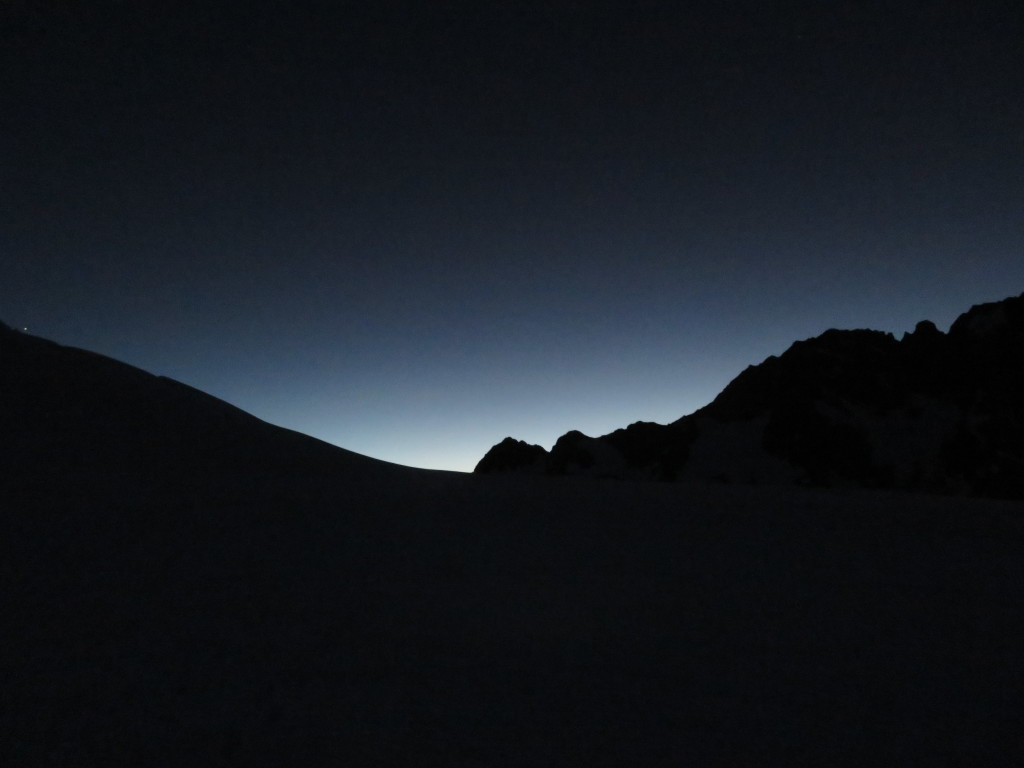
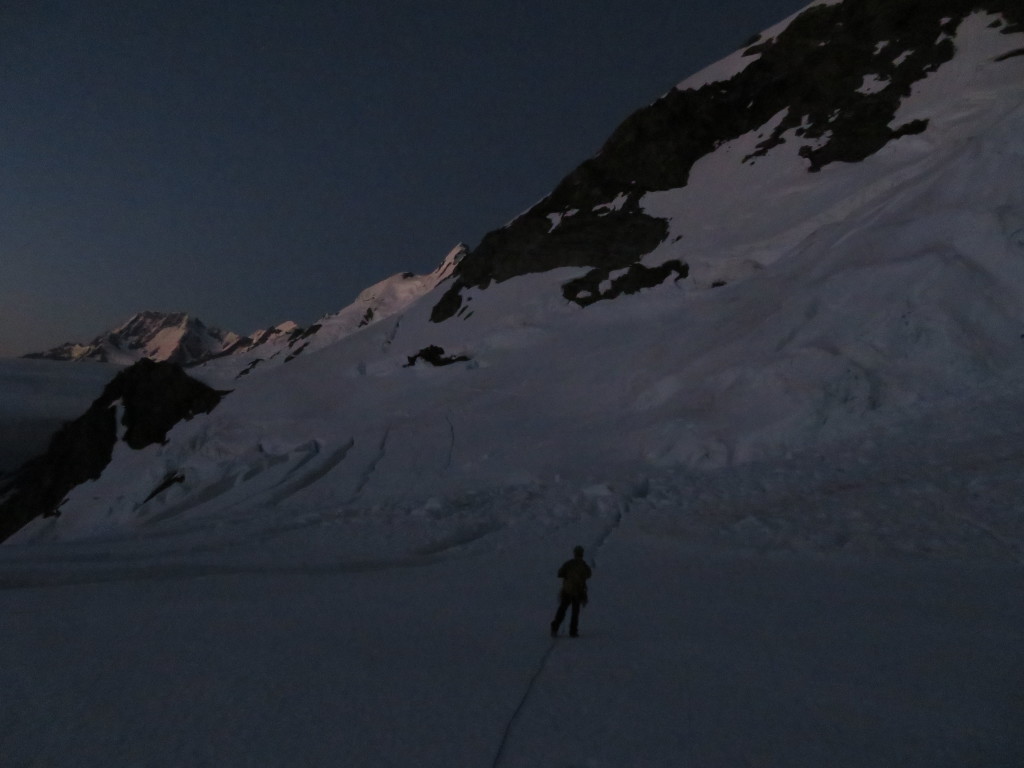
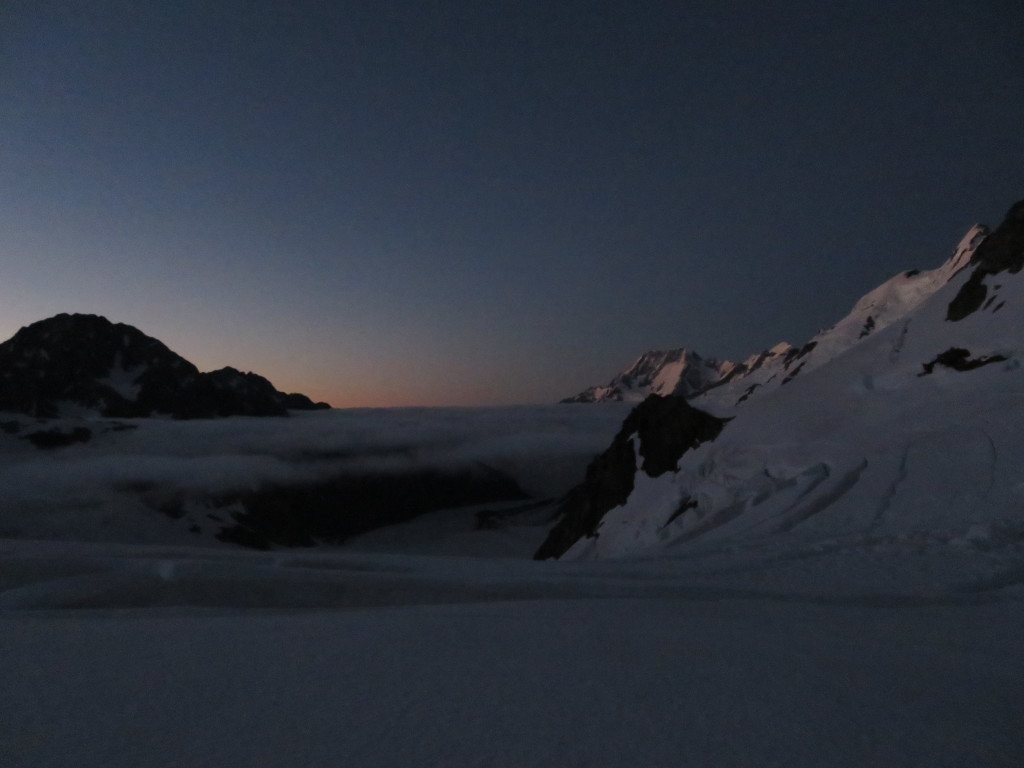
We crossed the first bergschrund and climbed 3 pitches using the rope, before agreeing that the terrain was easy enough to solo. We wanted to move quickly to gain the summit and get back to the hut before the heat of the afternoon, which would soften the snow and make things more dangerous. From leaving the hut, it took us ~5 hours to summit, and ~12 hours to get back to the hut.
The climbing was fairly easy compared to the hard ice I’ve done in Japan and Canada. However, the fact we were soloing, and the the scale of the vertical gain (not to mention the mind-bending exposure of the faces and ridges), was definitely a huge leap forward for me in terms of commitment. The focus and concentration it demanded was perspective-shifting, with the consequences of slipping or messing up being potentially fatal.
There was so much danger to be aware of, every ice tool and crampon placement had to be 100% solid. My mind was almost as clear as the views we had of the mountain scape on that perfect day. It was terrifying, and it was sublime.
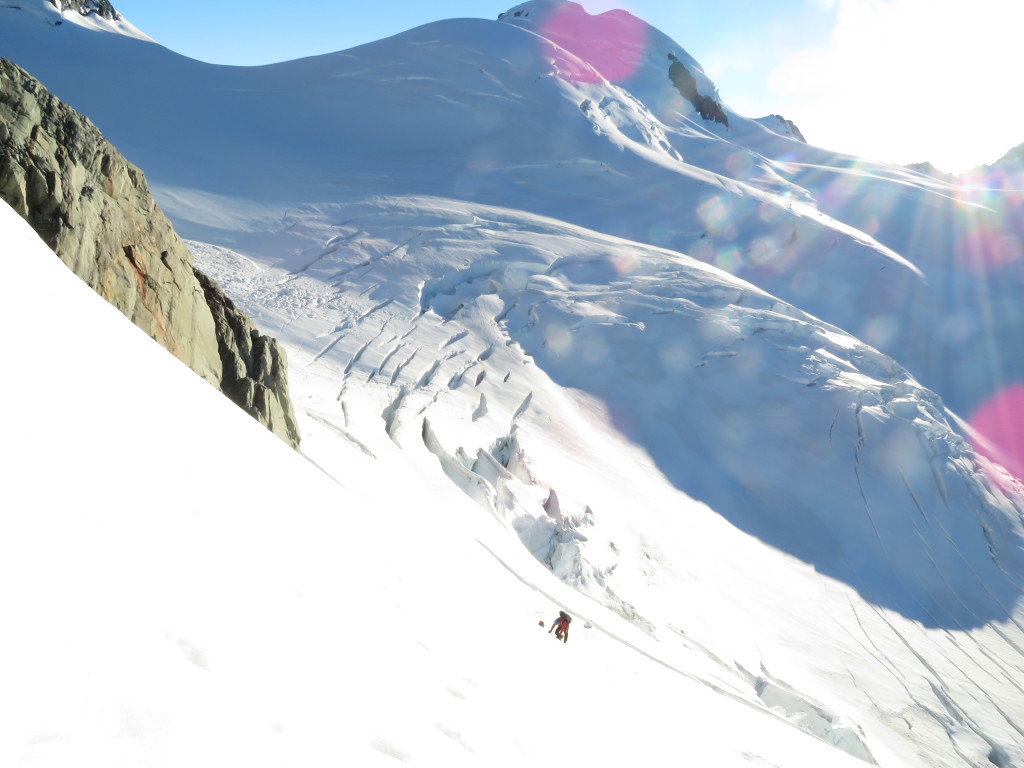
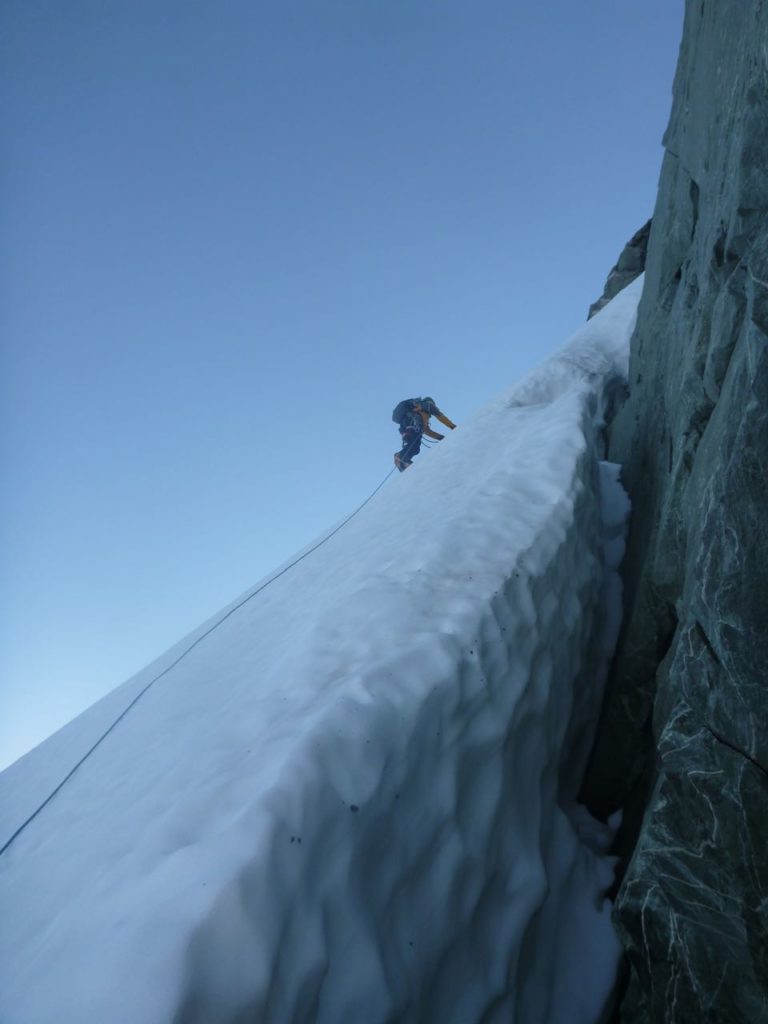
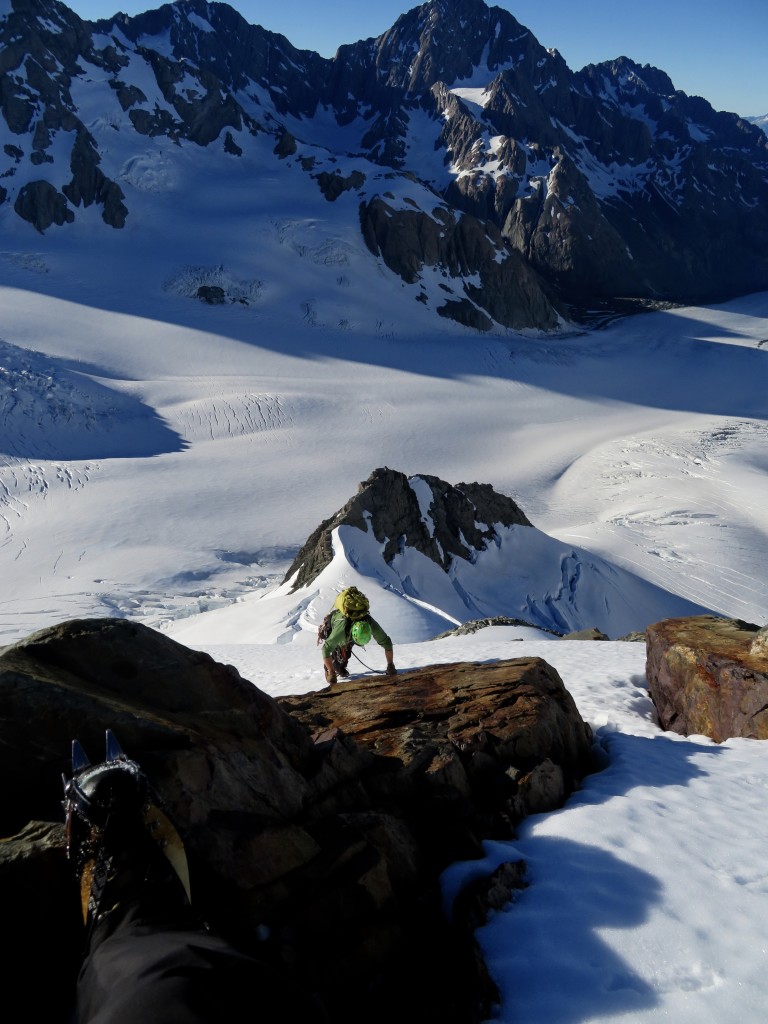
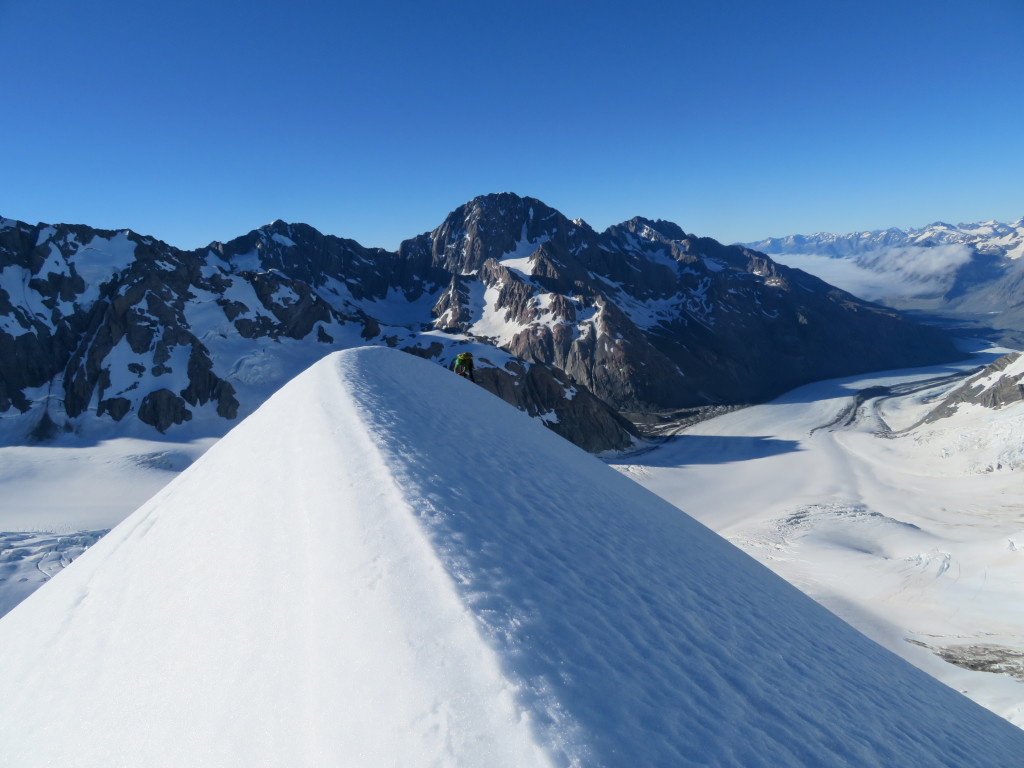

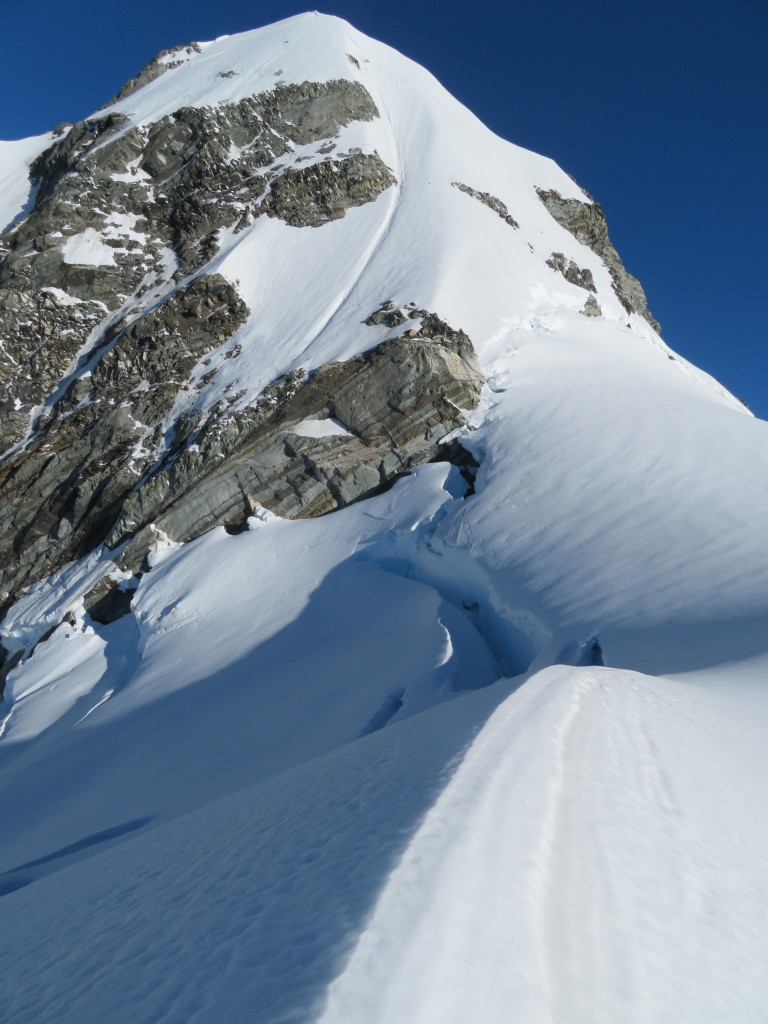


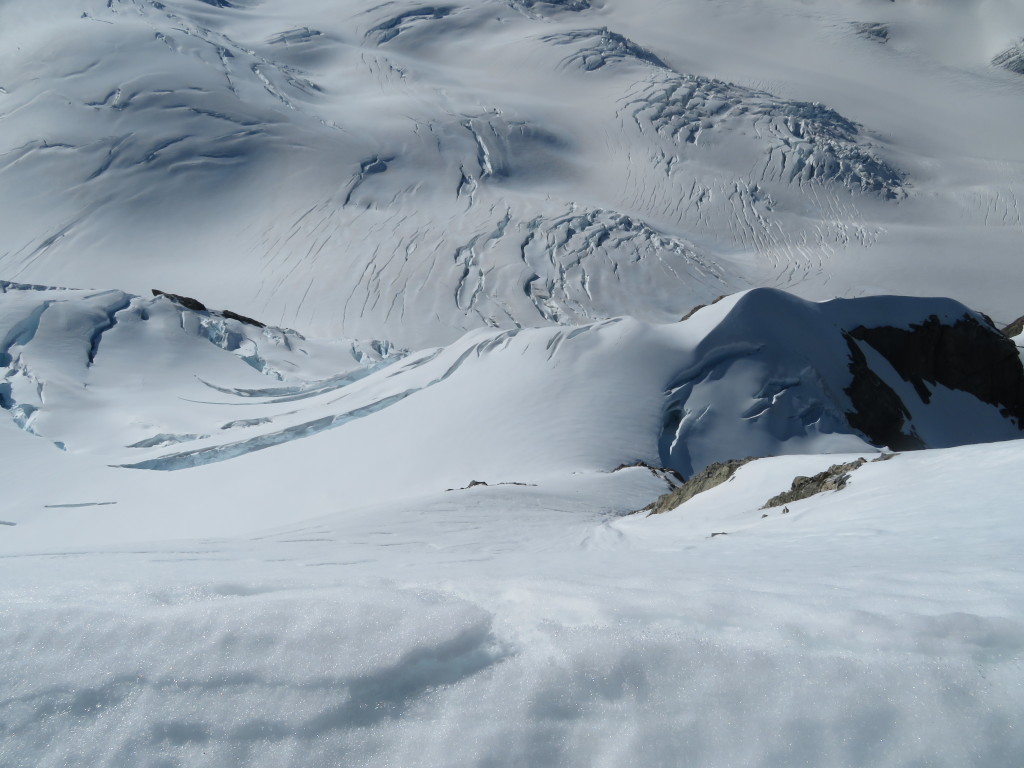
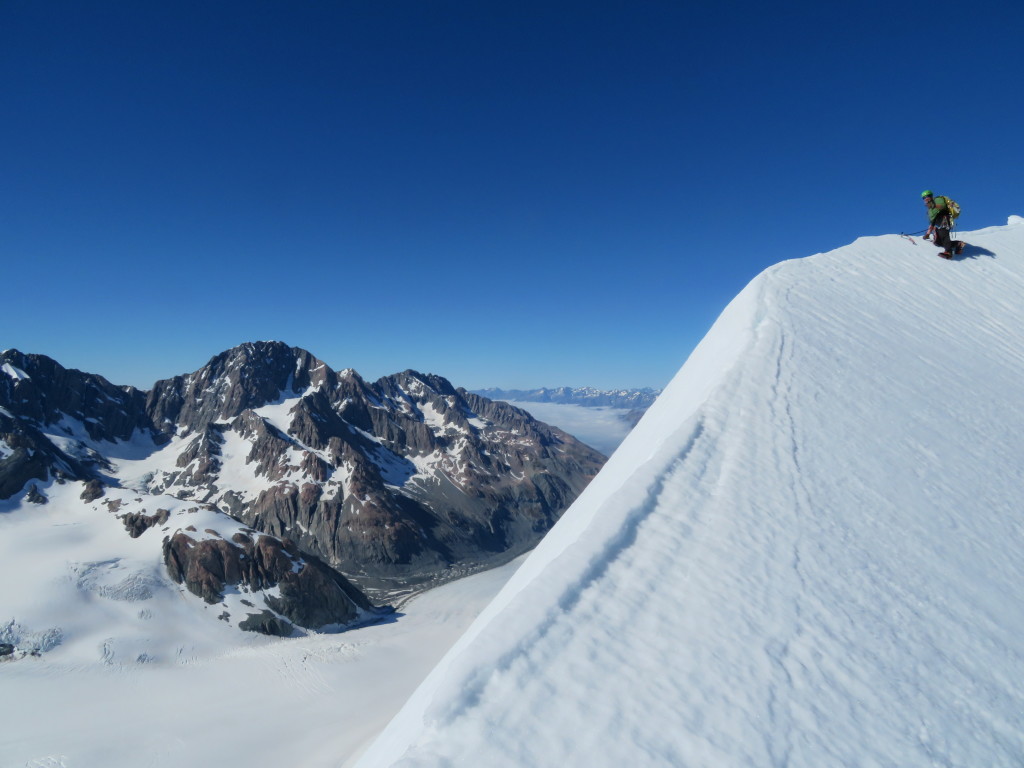

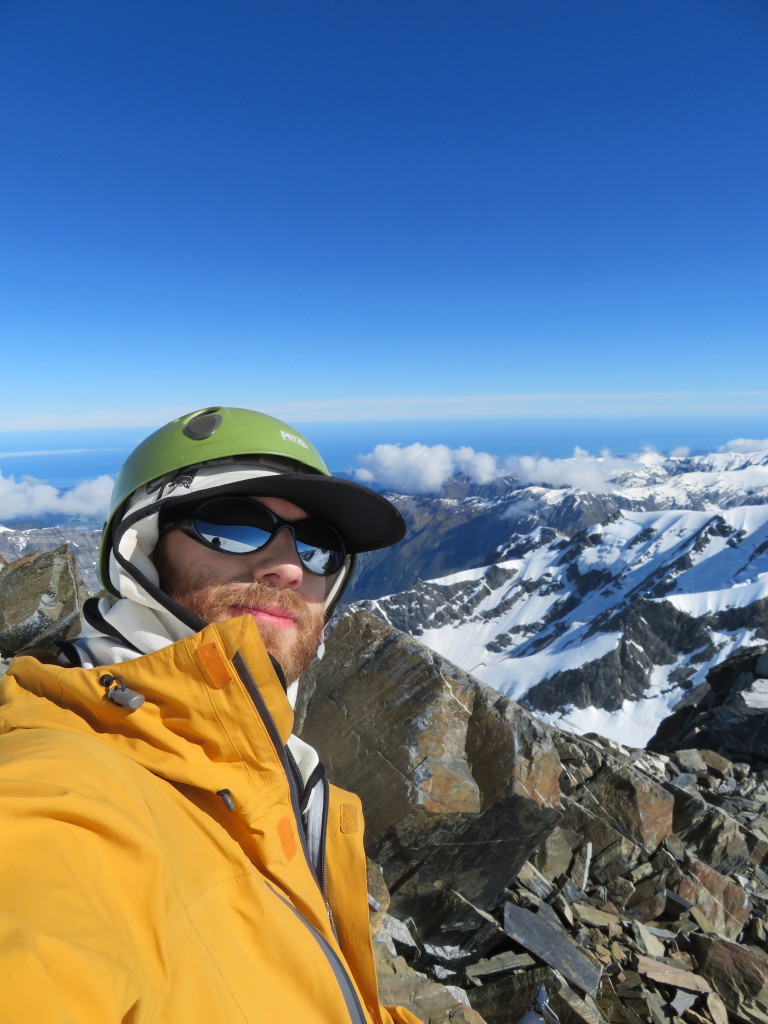
After getting to the summit, the most mentally taxing part of the climb was down-soloing the face we had just ascended. This was more difficult than climbing it. Rob was unsurprisingly much faster at this than me, but taking my time to make every step and tool placement solid, we got down to the glacier within reasonable time. At one point though, crossing a bergschrund, I did slip and began to slide for 1-2 seconds – a quick self arrest prevented me sliding into a ~40m crevasse.
By the time we were at the bottom of the mountain, things were heating up and the snow was softening. We did see a house-size chunk of ice roll off the ceracs into the bowling alley we had to cross… “at least that now gives us something to hide behind!”. We did the mad-mile quickly, then crossed the Tasman Glacier in a slow zombie-march through the soft snow.
We passed the other pair Rob and Claire as we descended Mt Green. They took much longer to ascend and get back to the hut than us, as they pitched a lot more of the climbing. I took a few photos of them from the hut which show the scale of what we just climbed.

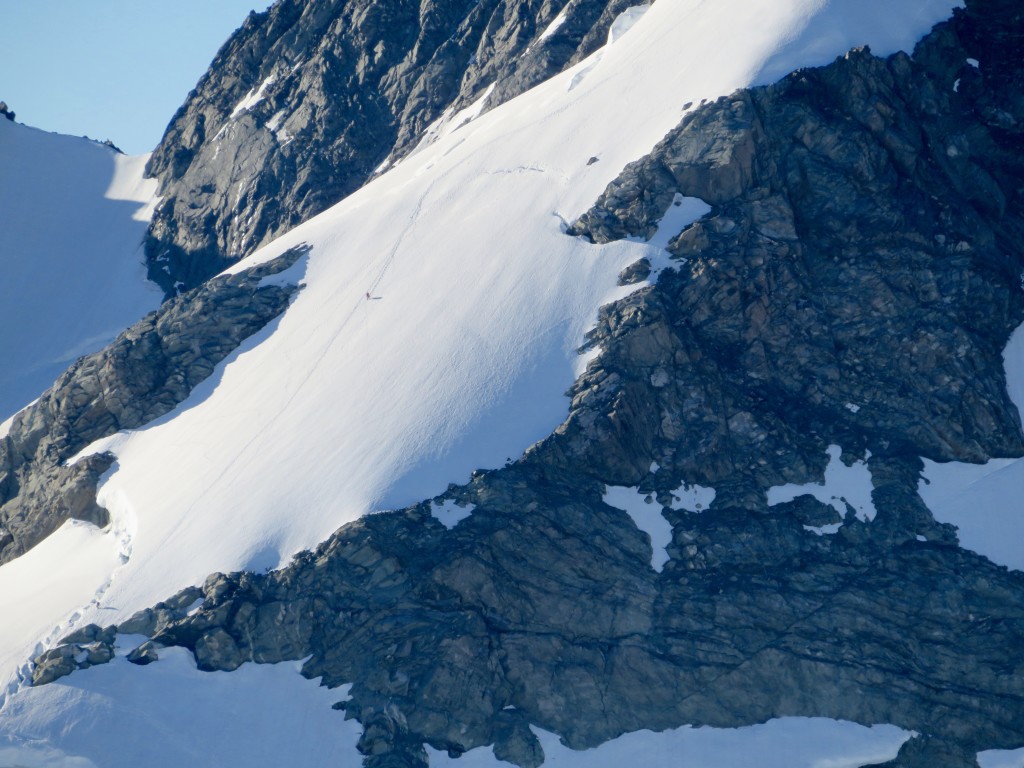
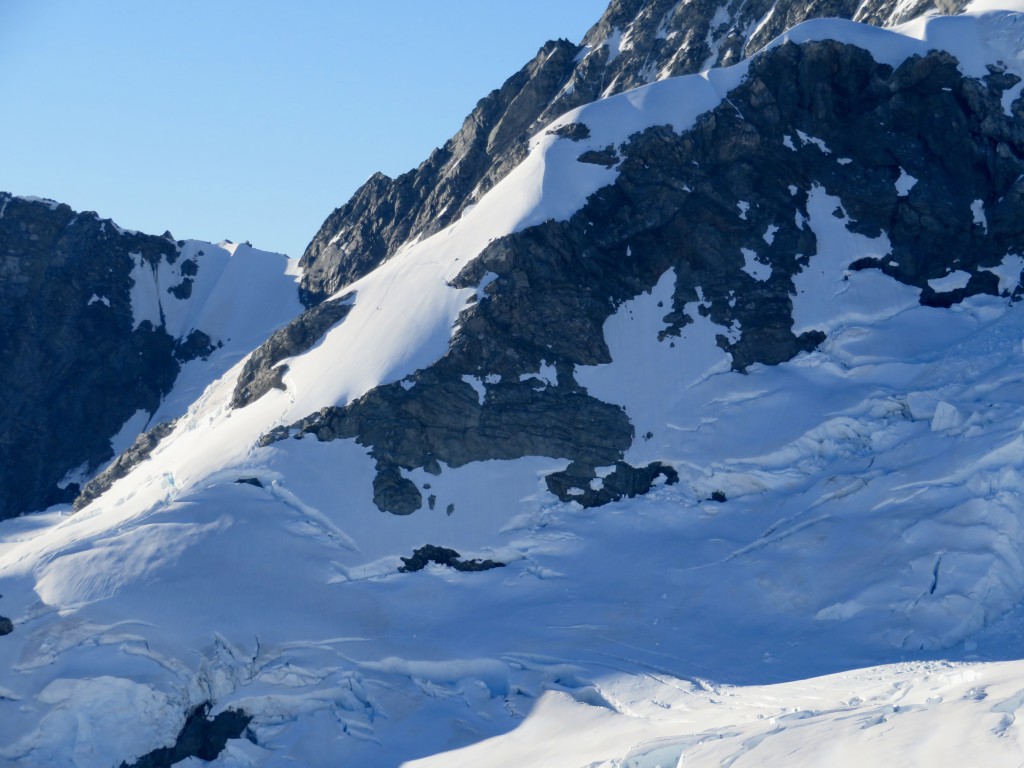

Eventually we could see them crossing the bottom bergschrund.
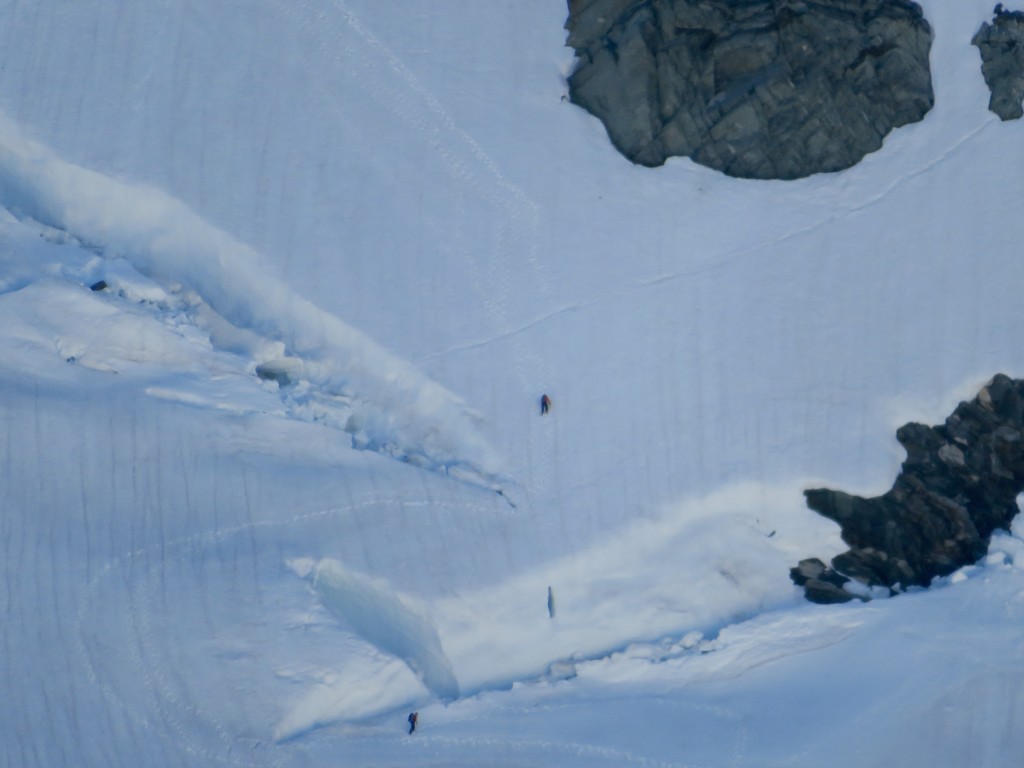


Whilst we waited for Rob and Claire to join us, there was more feasting and hut banter with Lydia and Eddie, who had completed an alpine rock route that day.
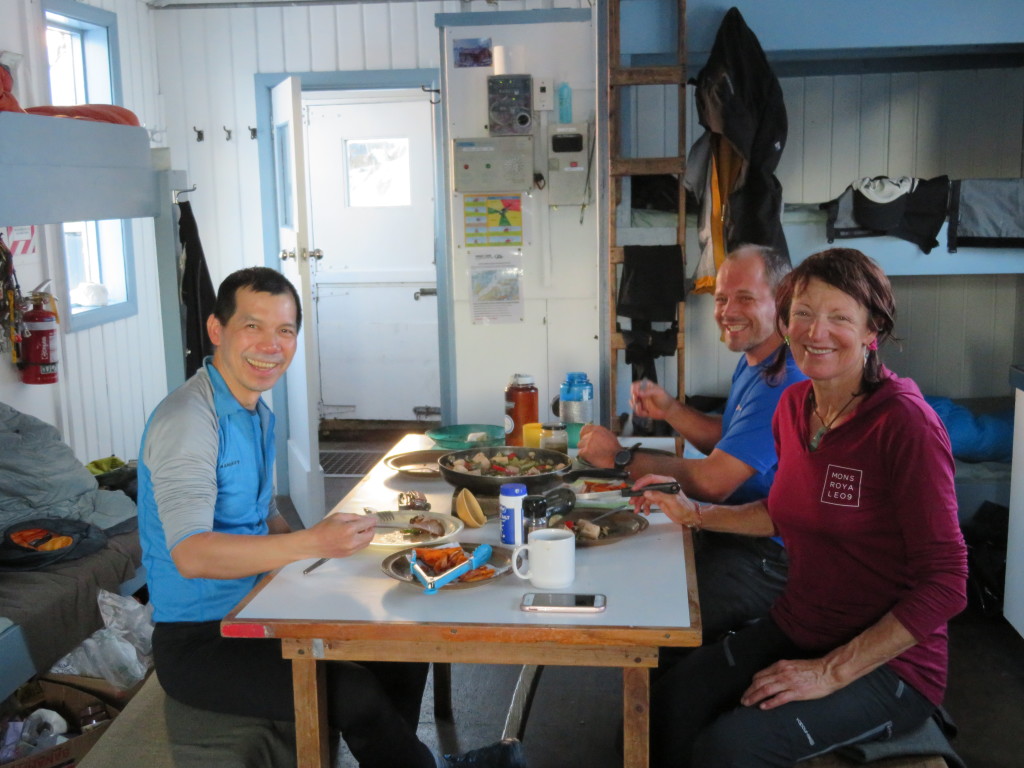
The next day (Saturday), Lydia and Eddie were going to fly out from Darwin corner further down the valley. We decided to join them to make the fly out cheaper. Bad weather was on the way, and there were other things we could do elsewhere in the South Island, so we took the opportunity to escape having completed 2 decent objectives. The walkout down the glacier was spectacular.

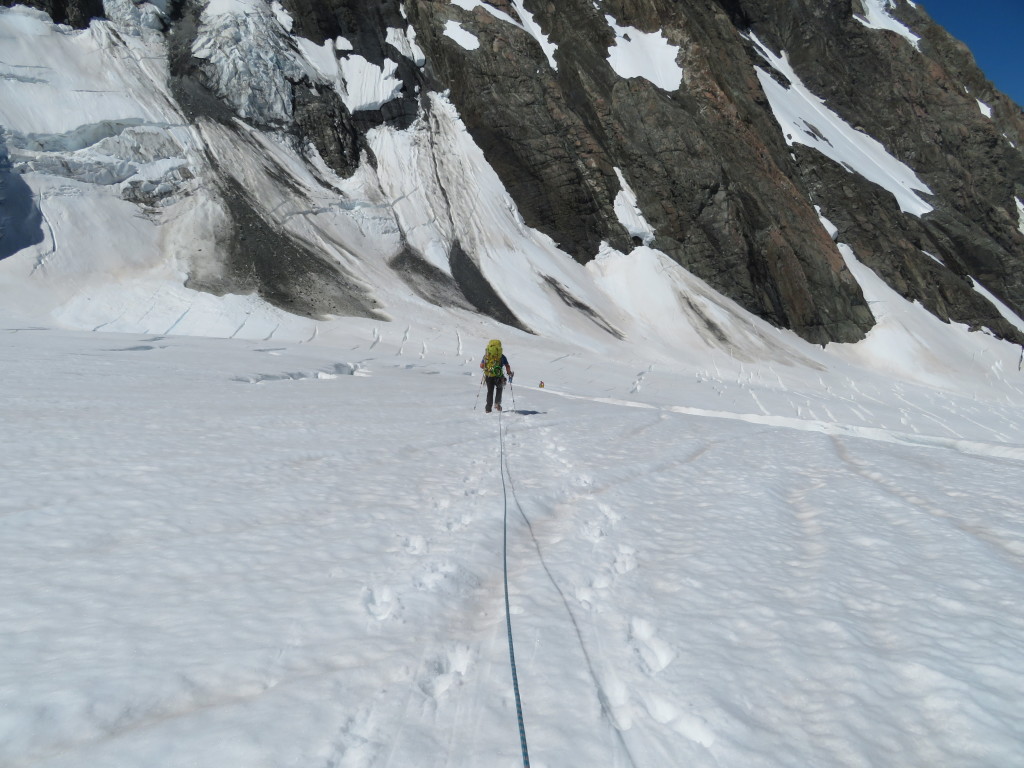
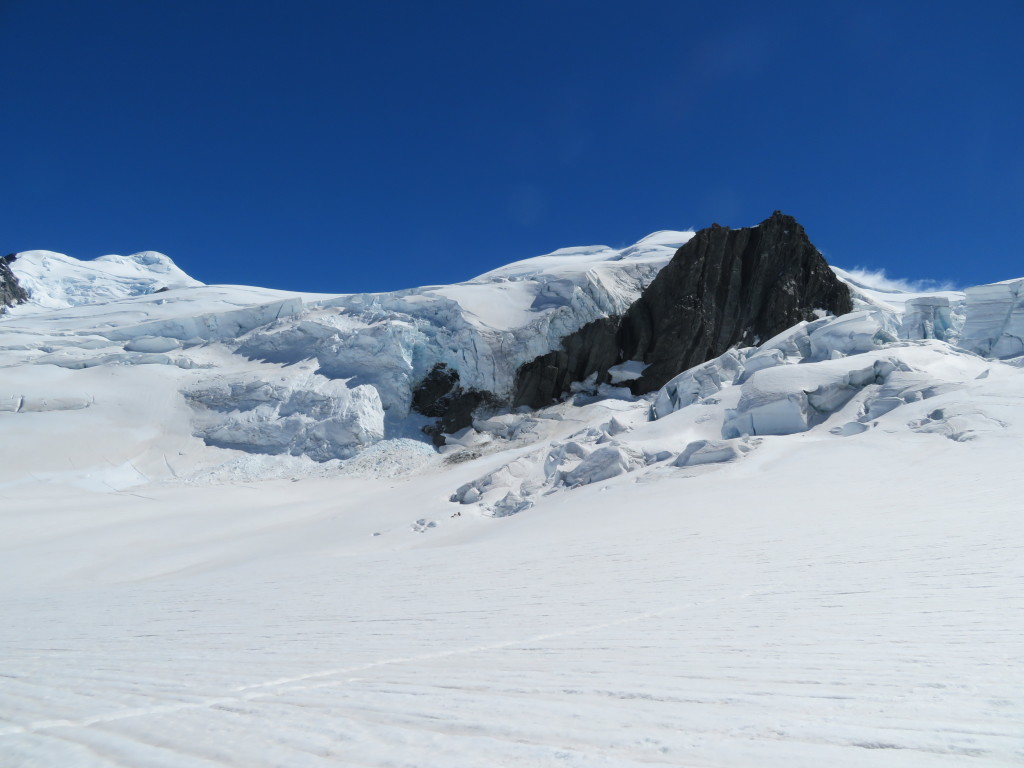
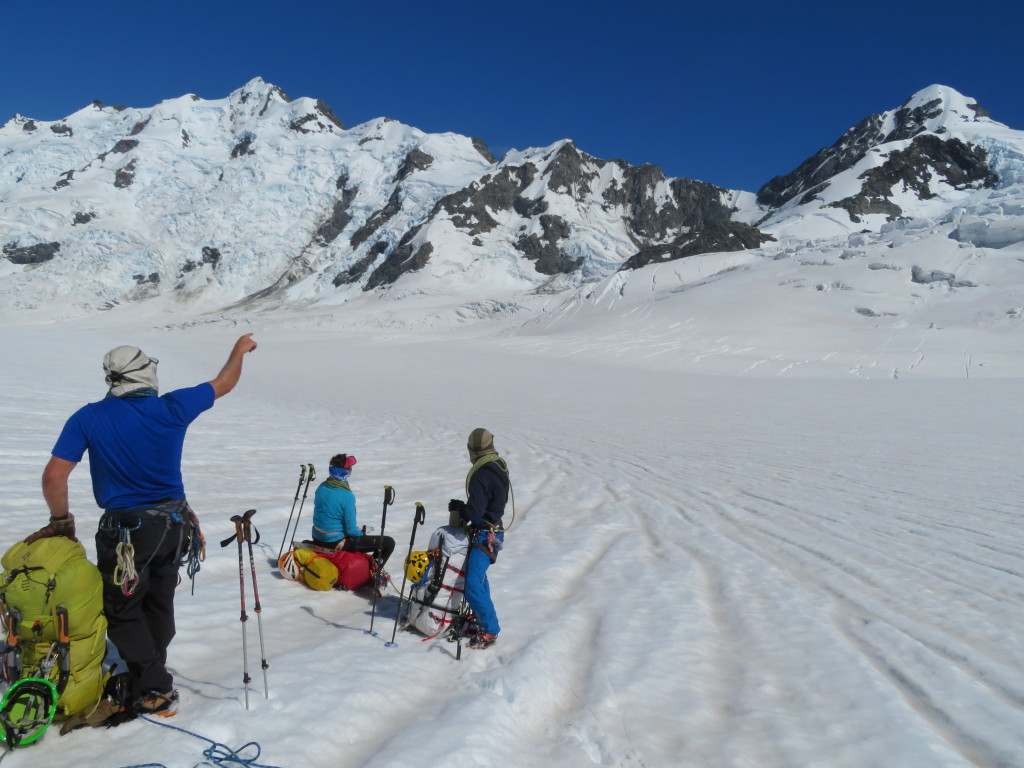
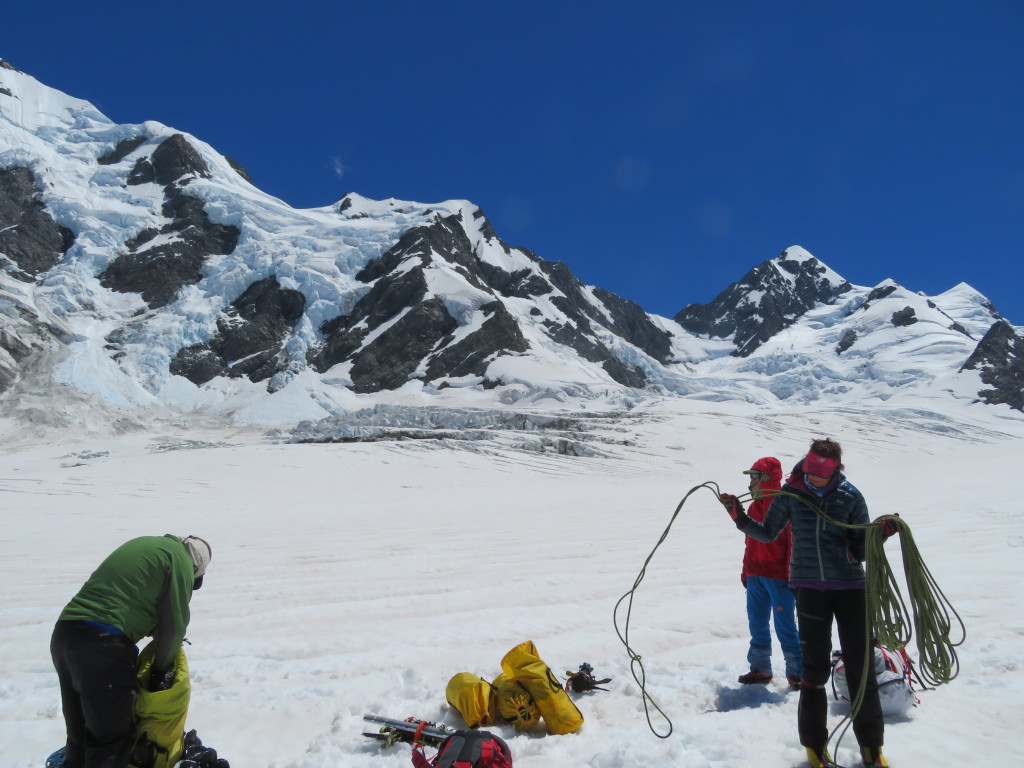
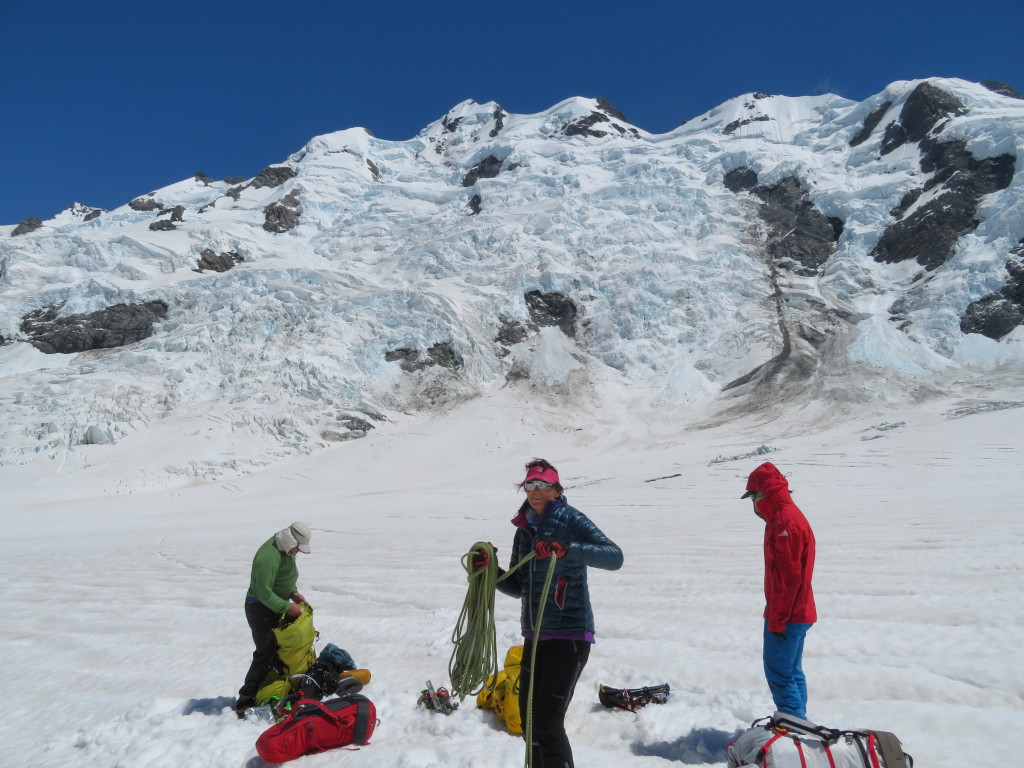
Days 8-9: Objective 3 – Remarkables Grand Traverse (2319m)
[plus a rest day]
Having got some good bang for our buck on the upper Tasman climbing steep snow and ice, we decided to change gears somewhat and do a long alpine rock scramble. The Remarks Grand Traverse is a classic that starts from the Remarkables ski field, just outside of Queenstown. Again, we had perfect weather.
The climbing was maximum around grade 6, so we did the whole thing in approach shoes. We practiced moving quickly, pitching where necessary but not wasting time placing extraneous amounts of gear.
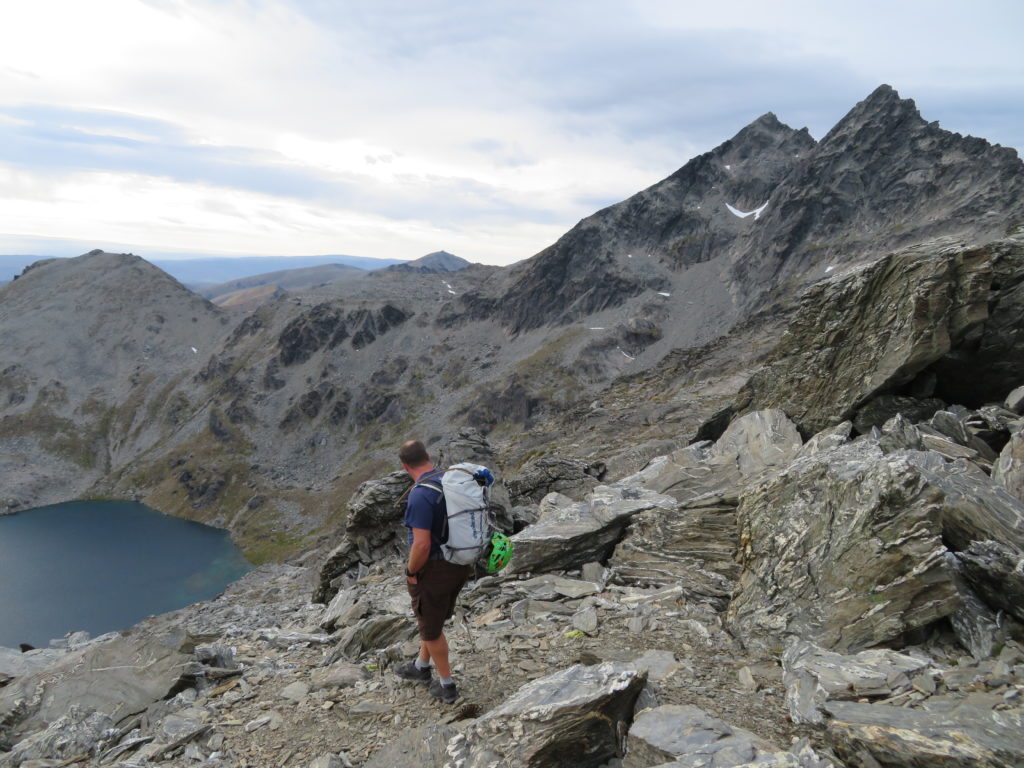
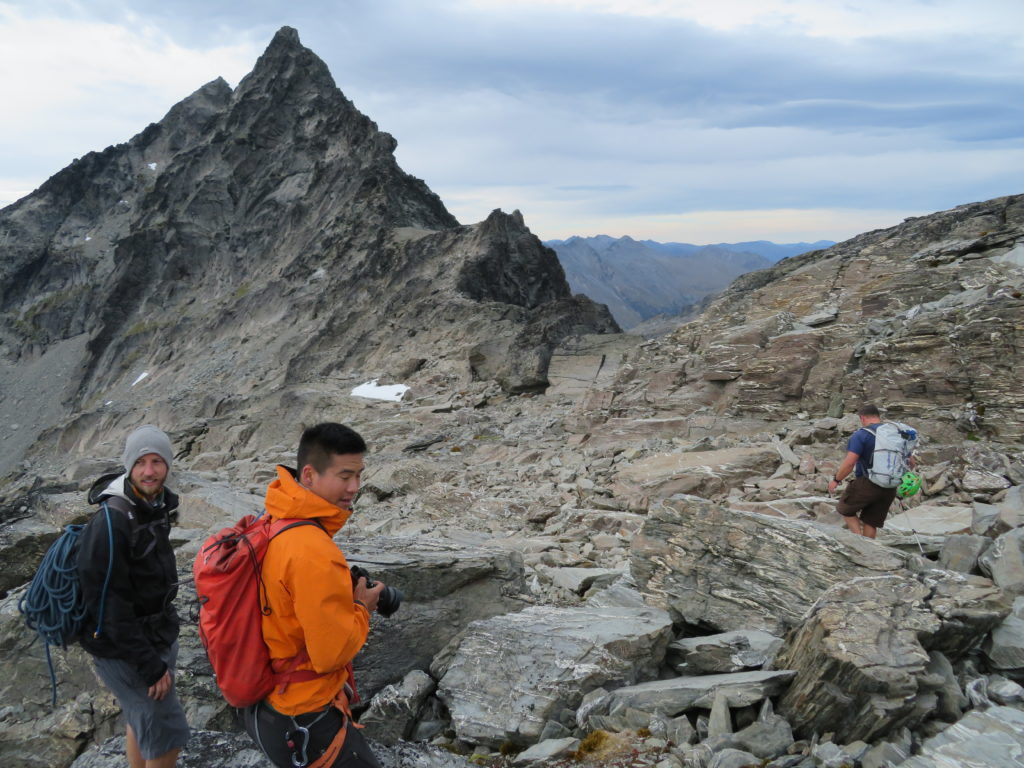

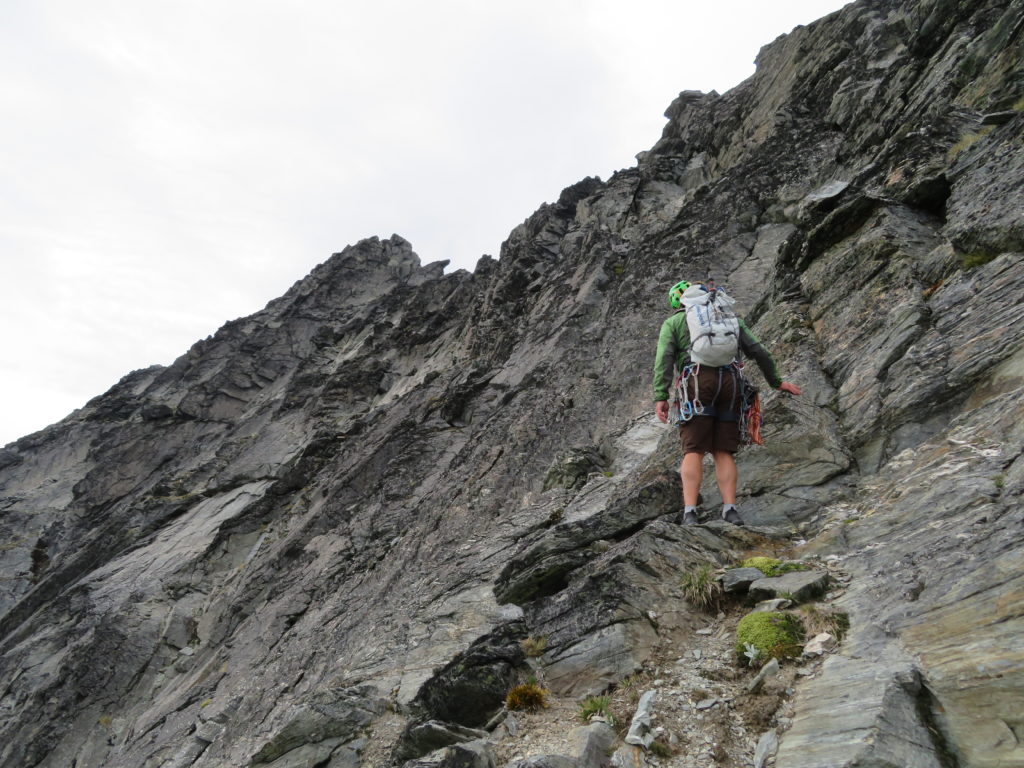
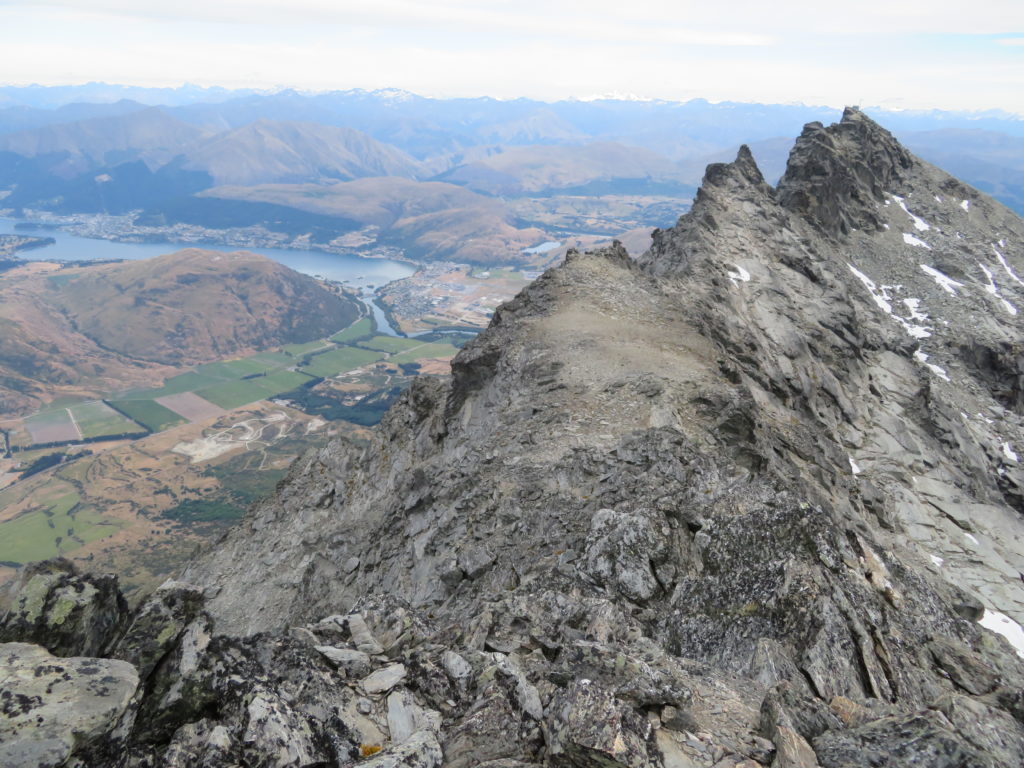
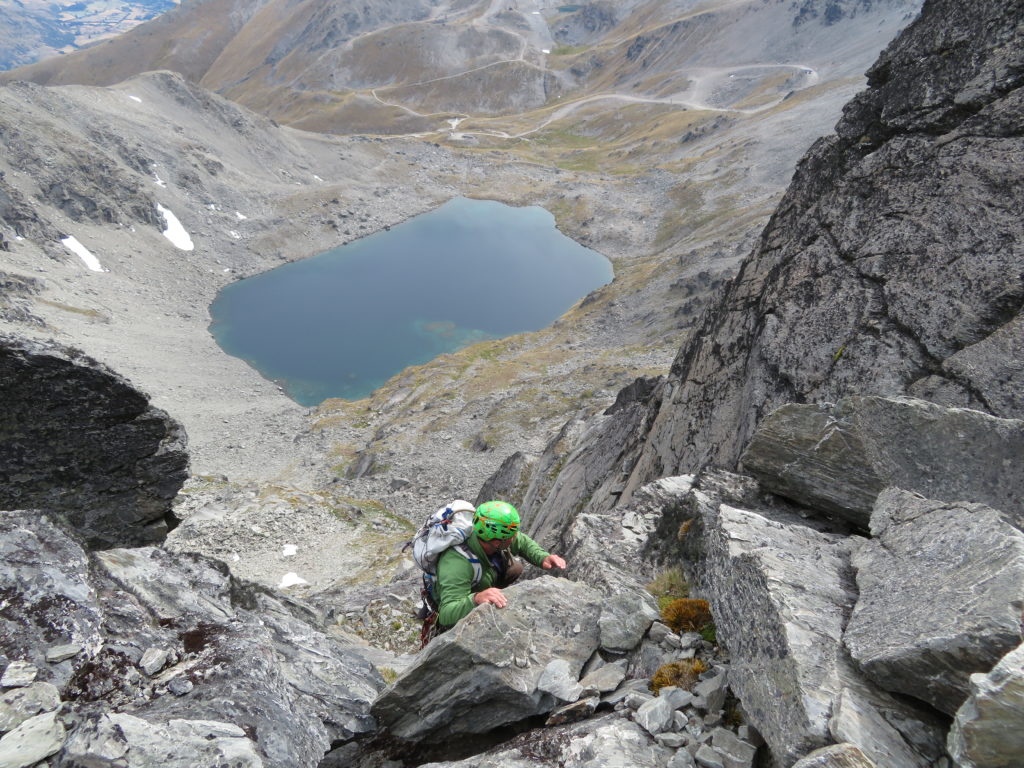
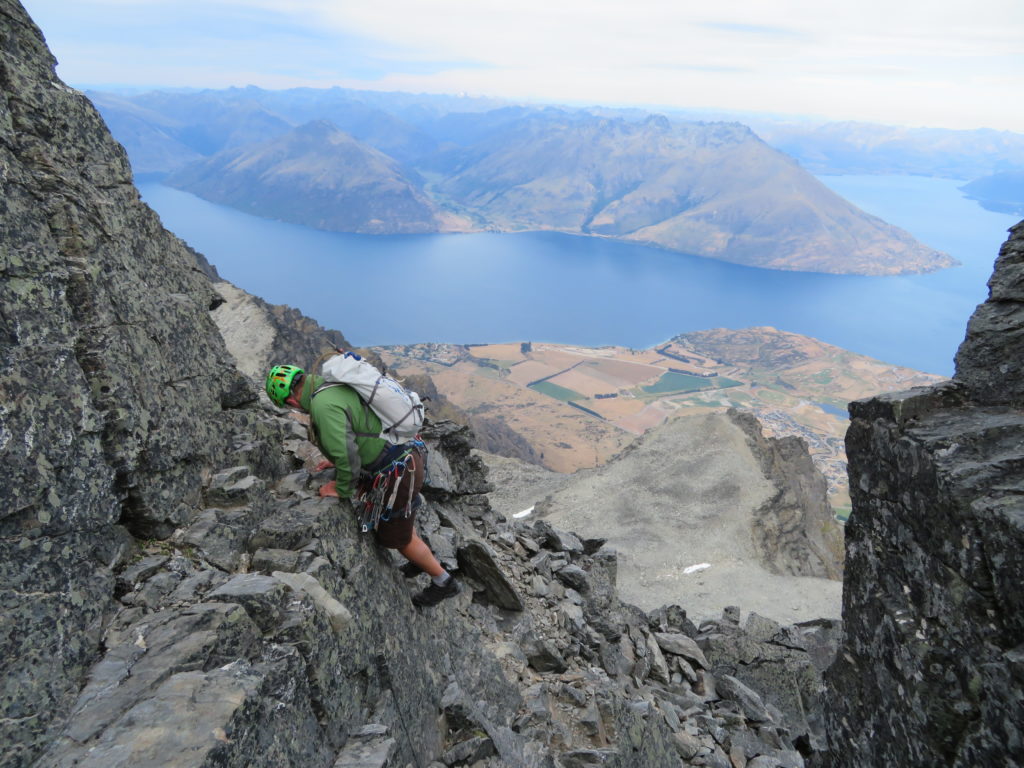

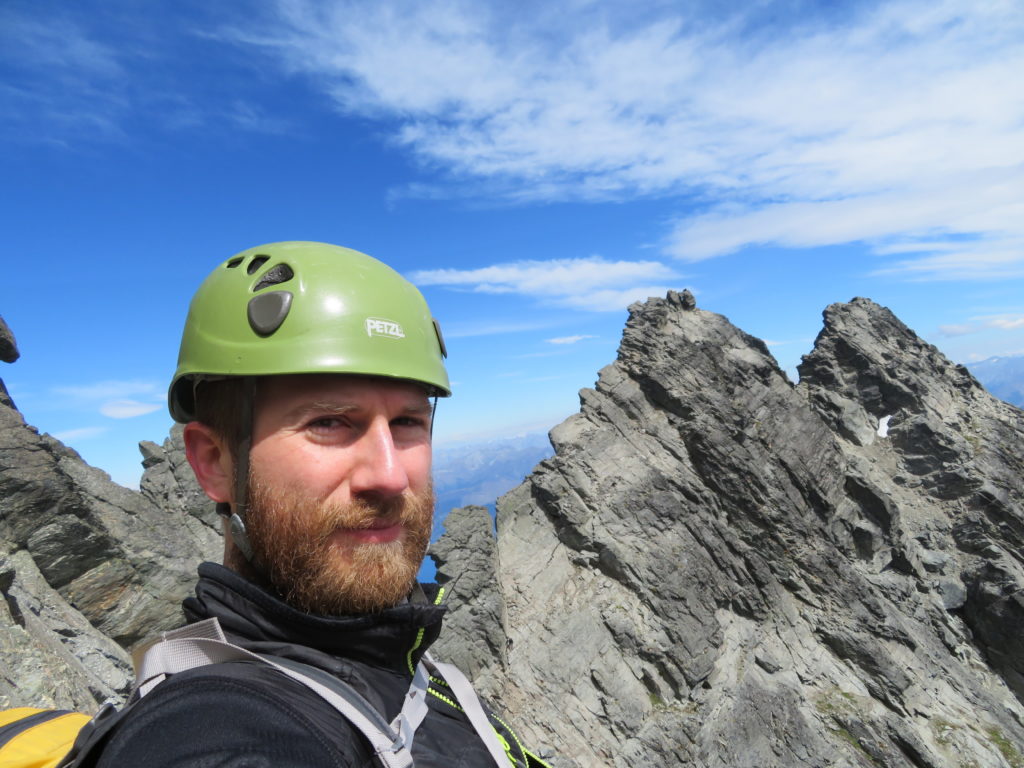


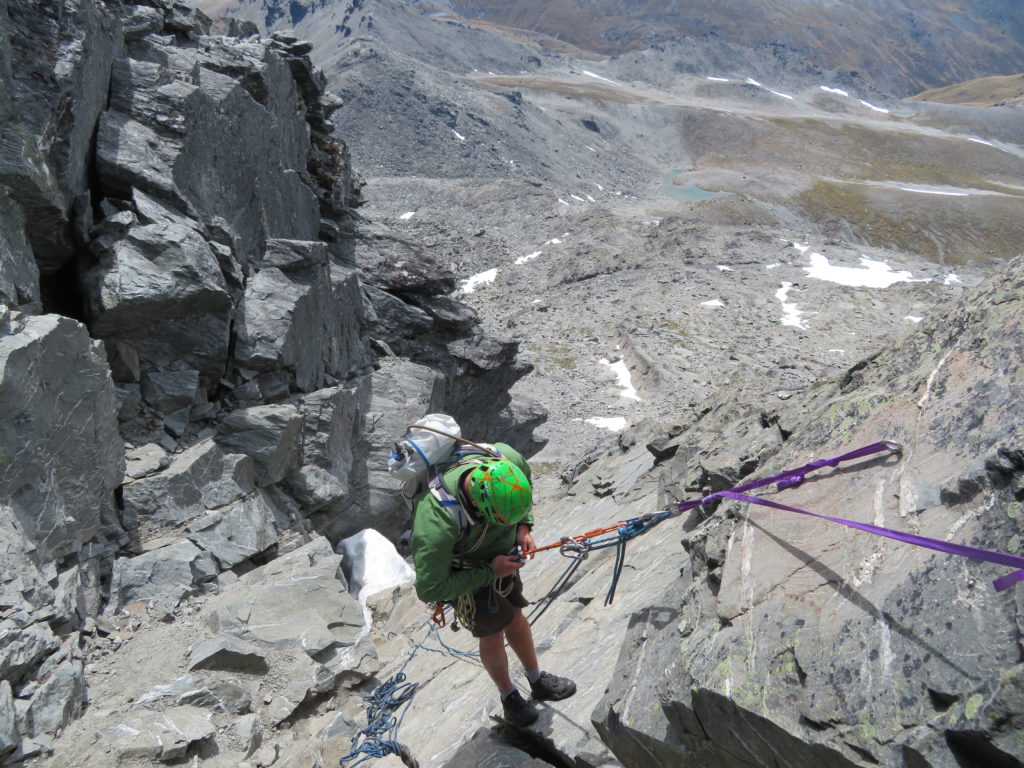
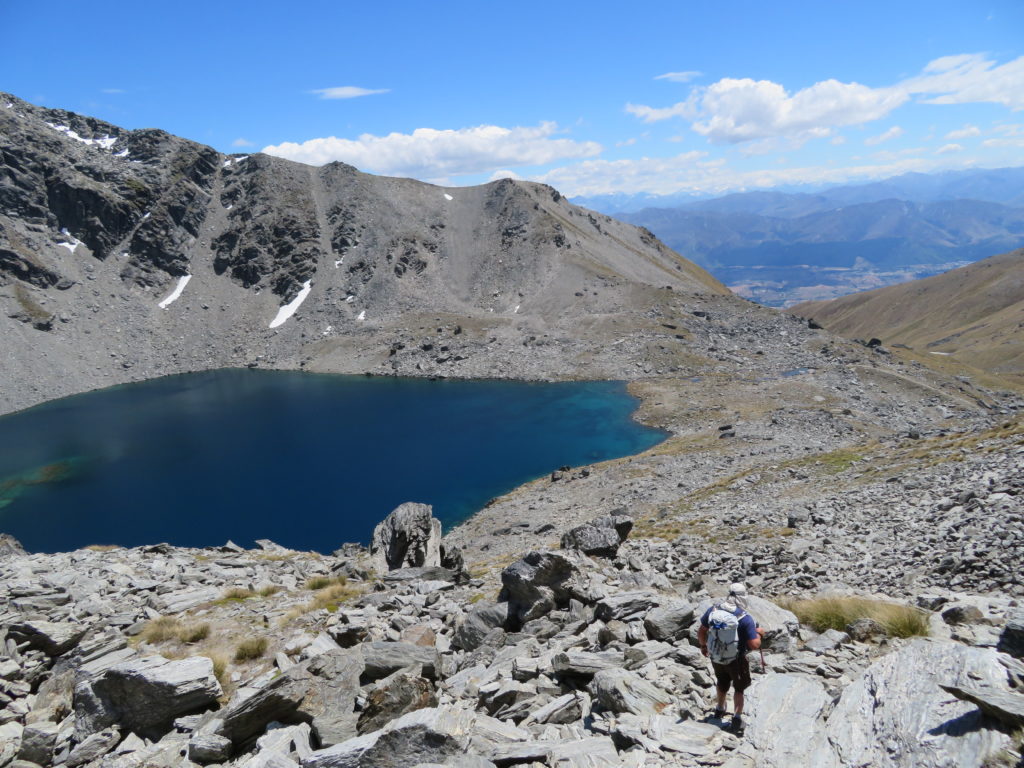
Days 10-11: Objective 4 – Mt Barff (2252m)

After a rest day in Wanaka, we re-packed our bags for a 2-day mission to climb Mt Barff in Aspiring National Park. This involved walking into Liverpool Hut from Raspberry Flat carpark (6 hours), before making a 3am alpine start the following day. We climbed Mt Barff quite easily, hut to hut in ~10 hours, then returned back to the car making it a mammoth 16 hour day. A good little fast-and-light micro expedition!
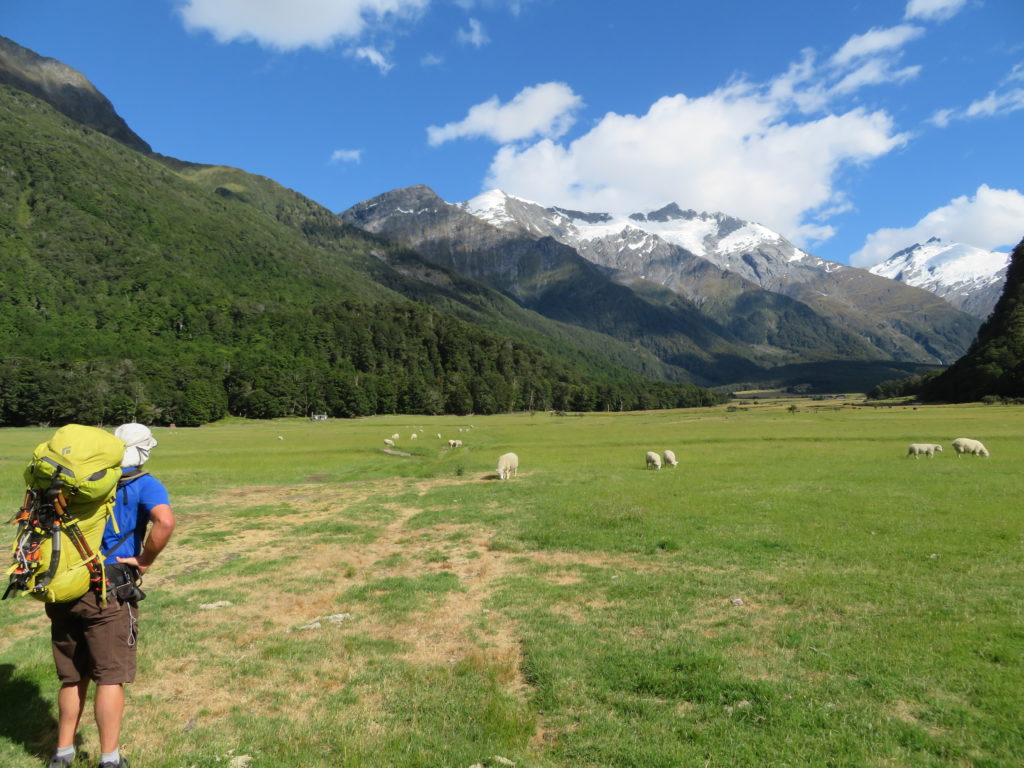
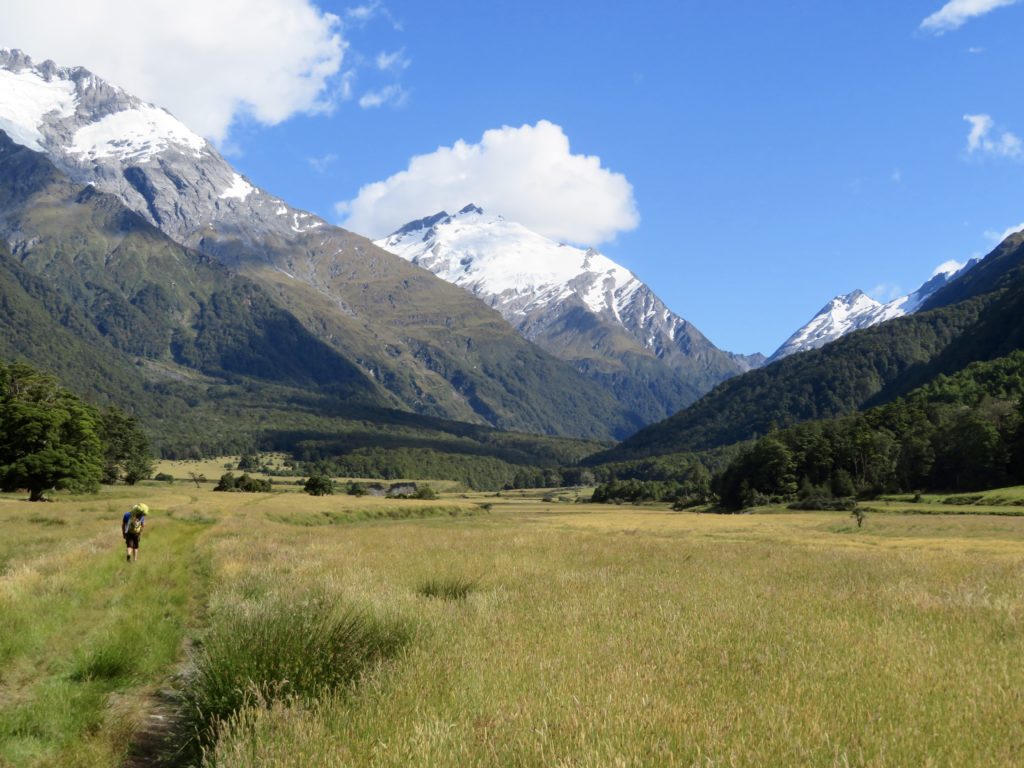
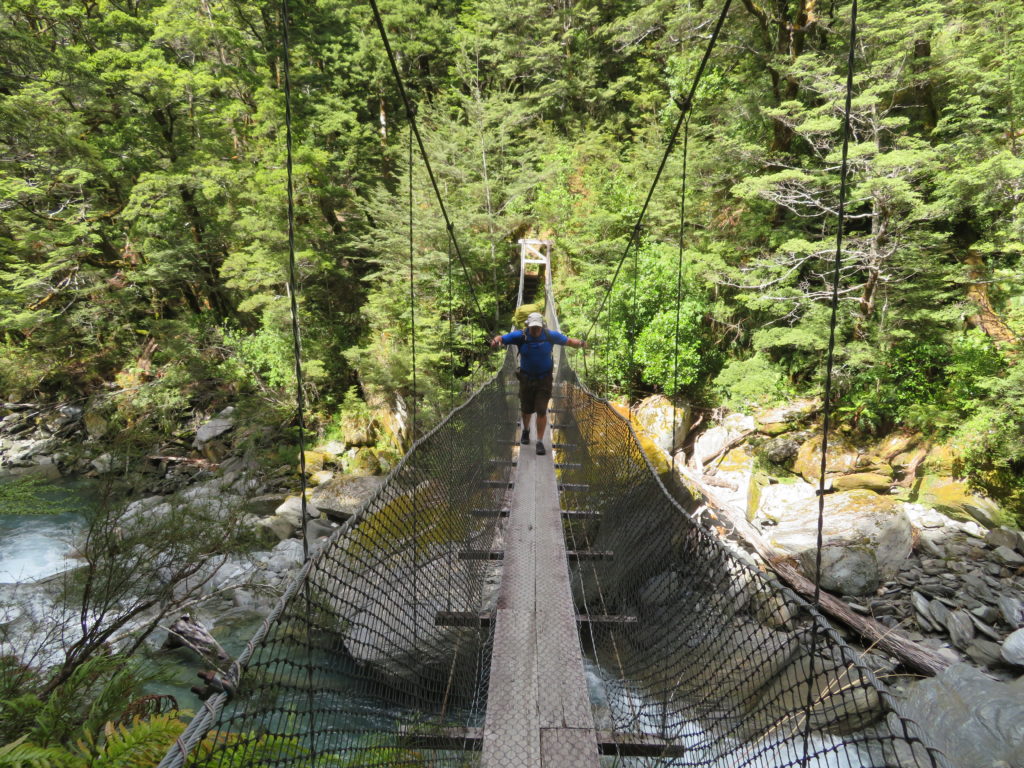
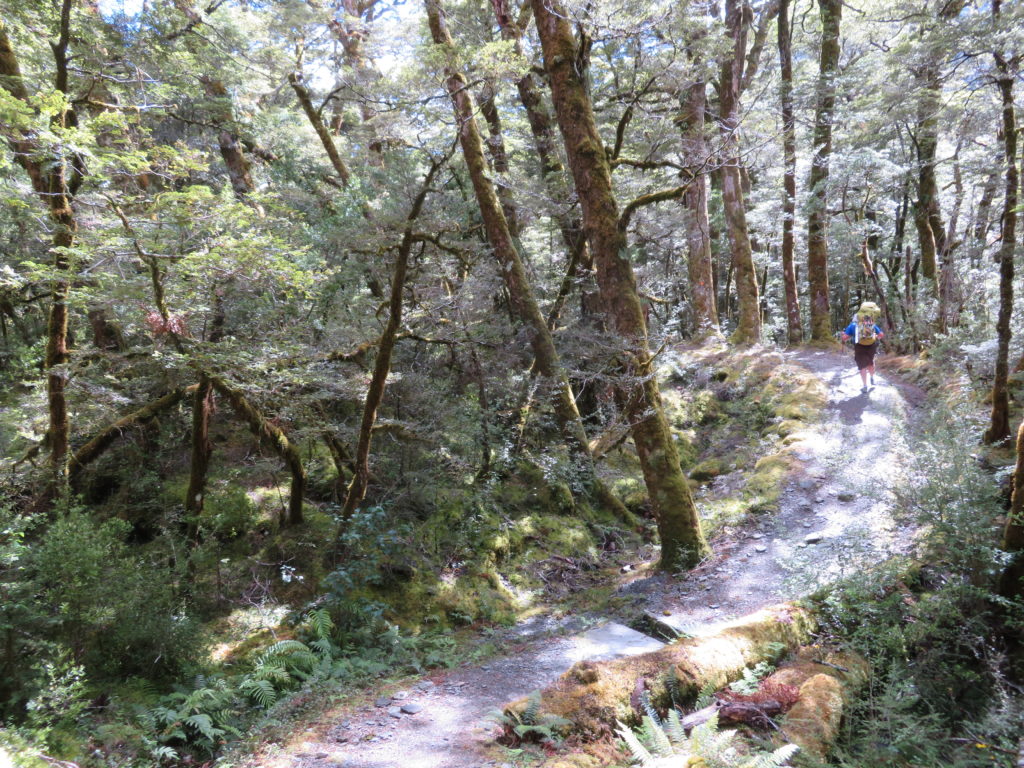
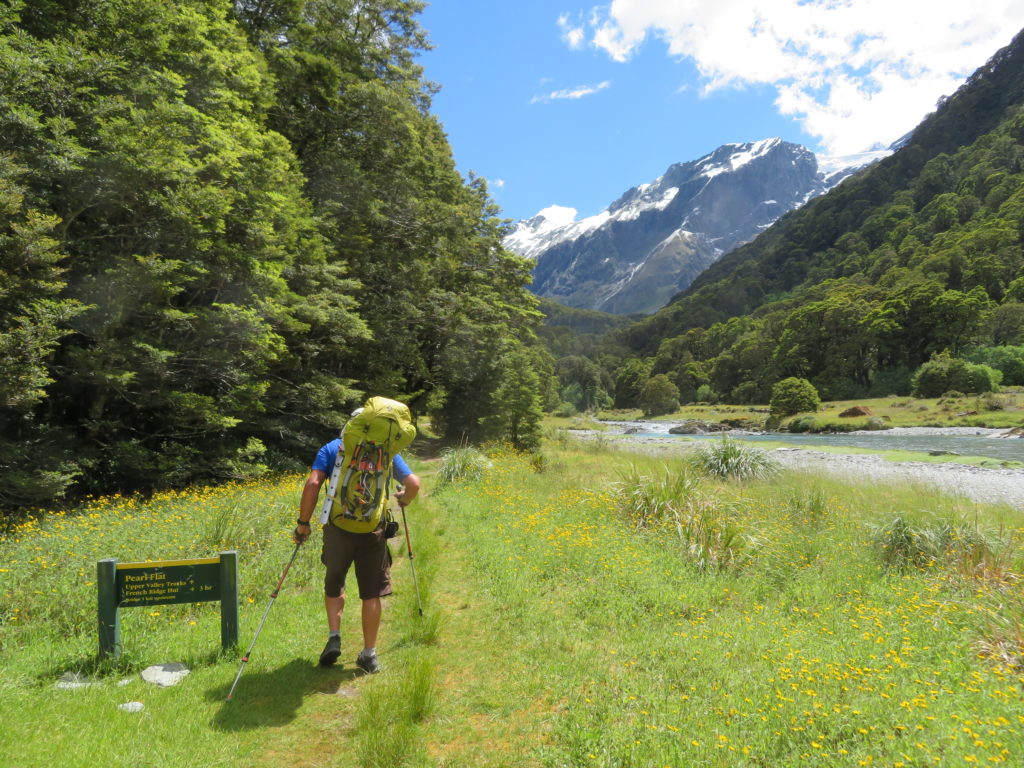

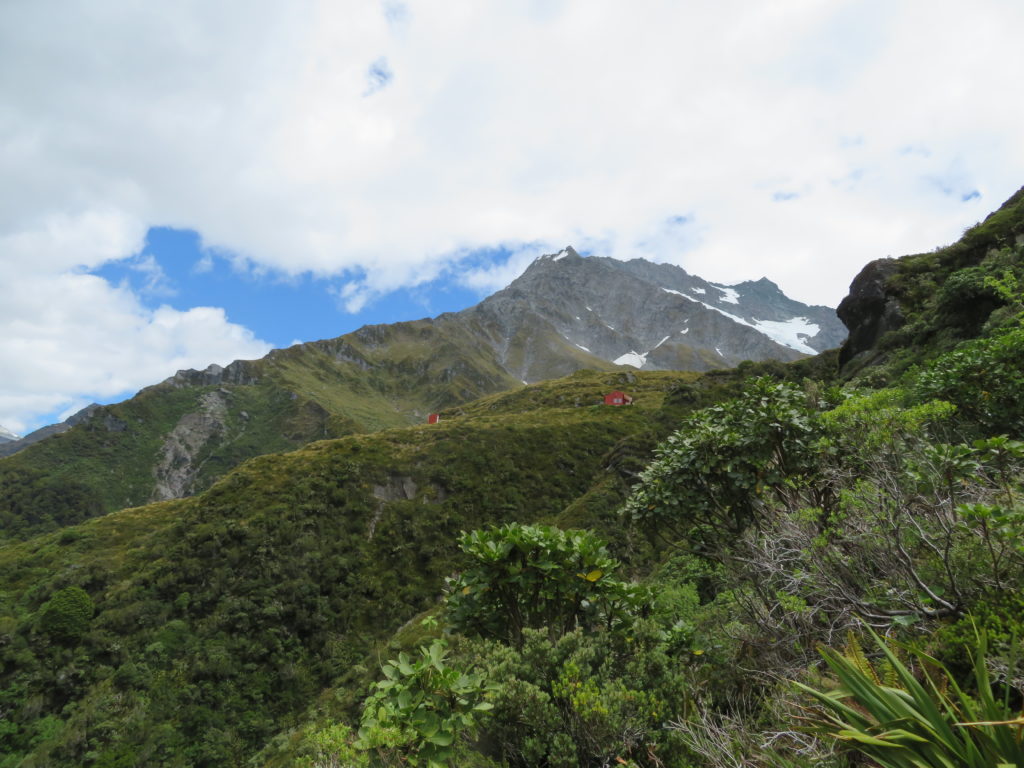

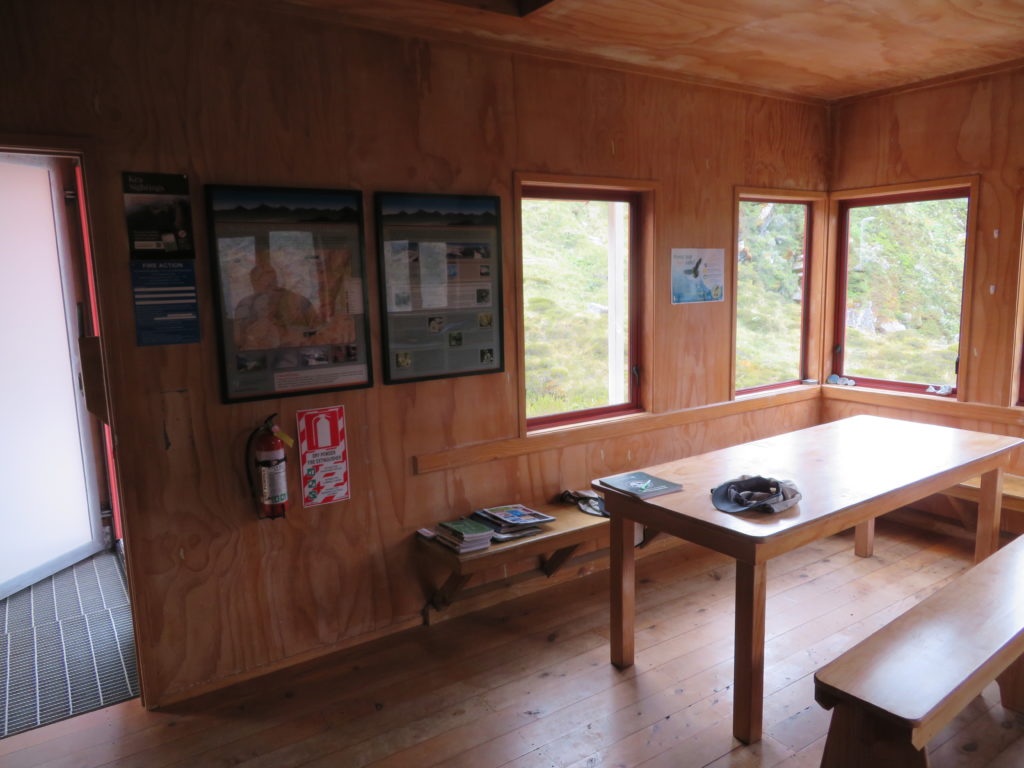
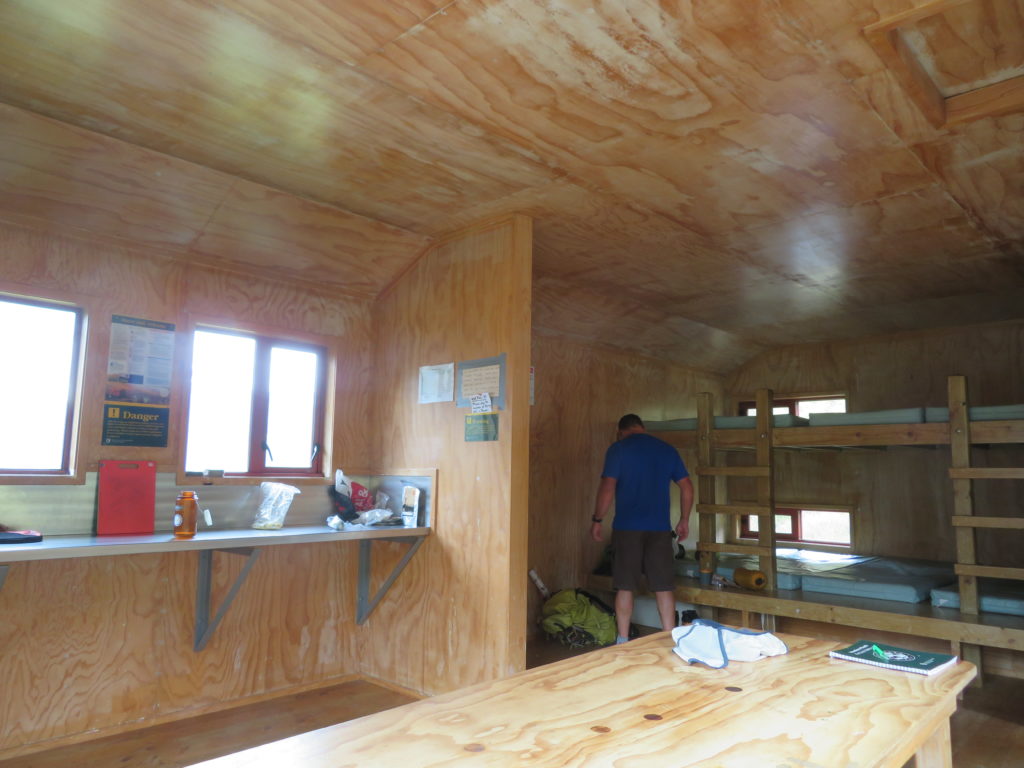
We ate some dehy food and went to bed early at 6pm. We woke at 3am the next morning for the ascent of Mt Barff. There was a fair bit of route finding to do in the dark, which was aided by a trail in fair condition, as well as a pretty solid system of cairns.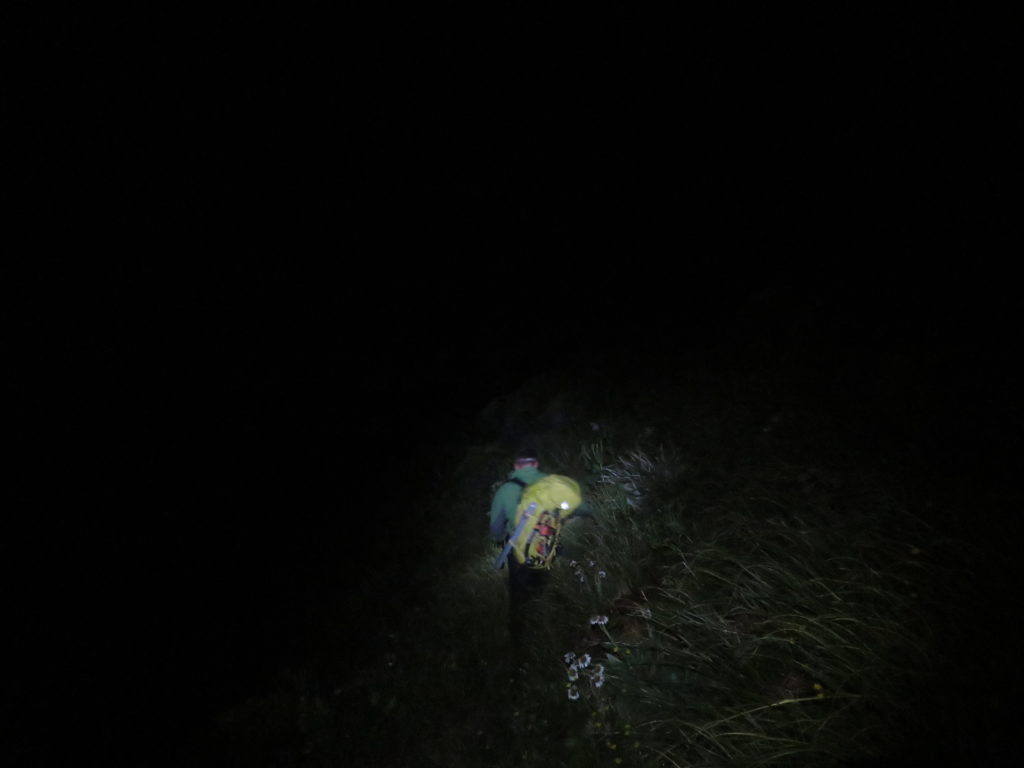
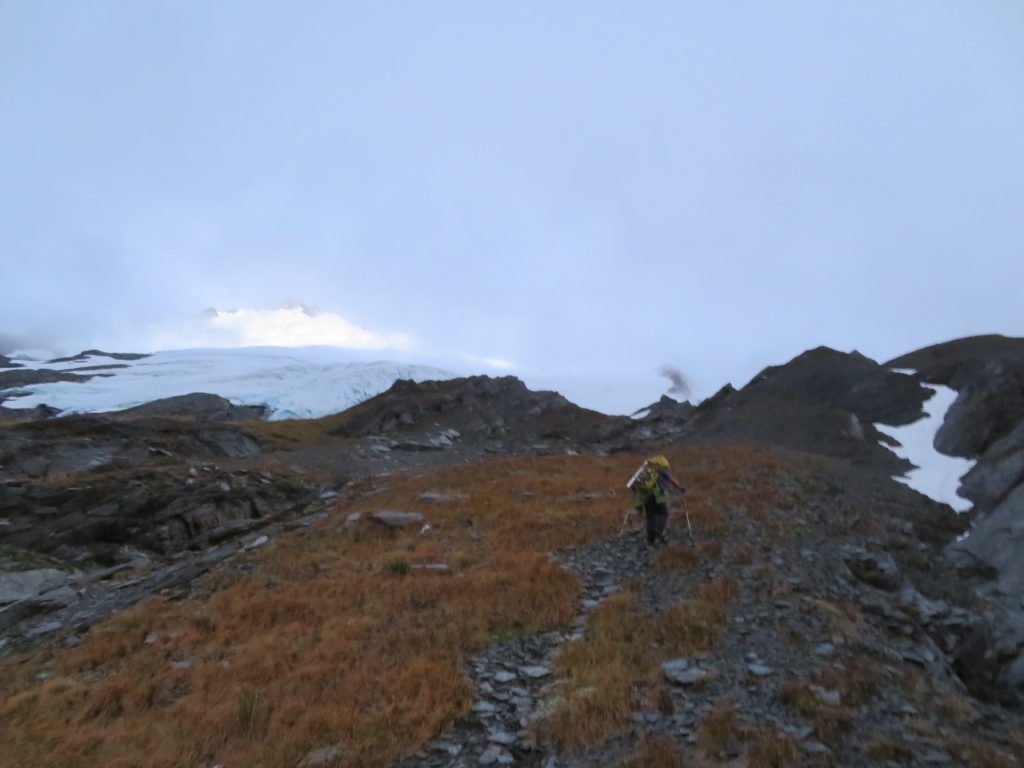
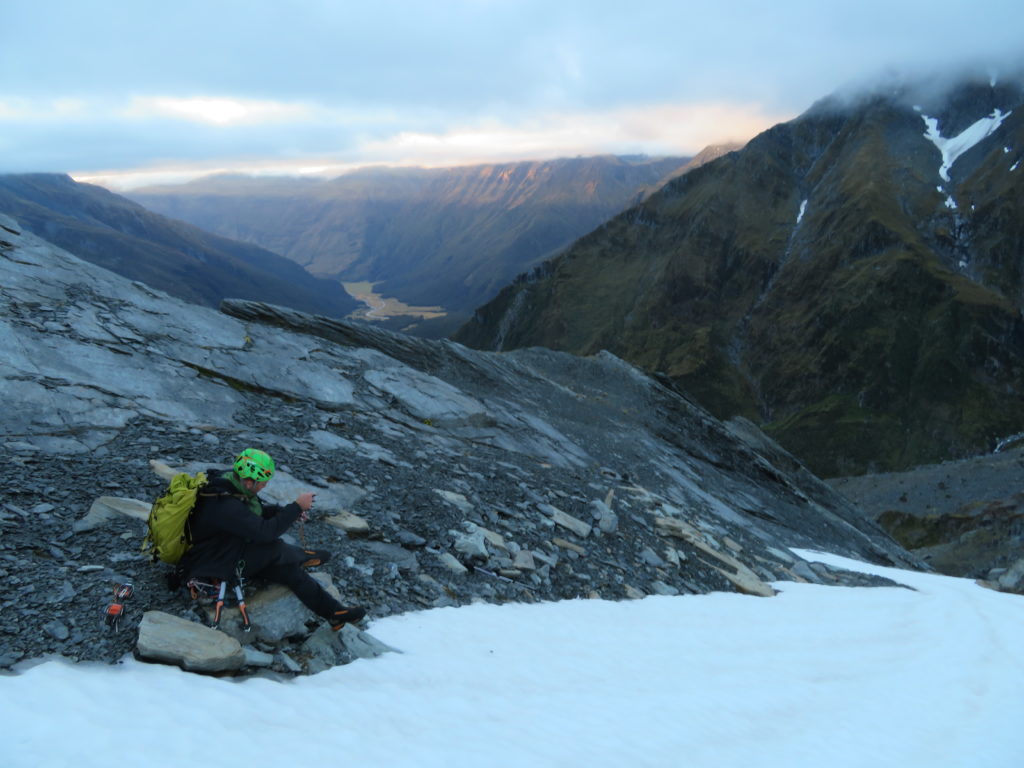
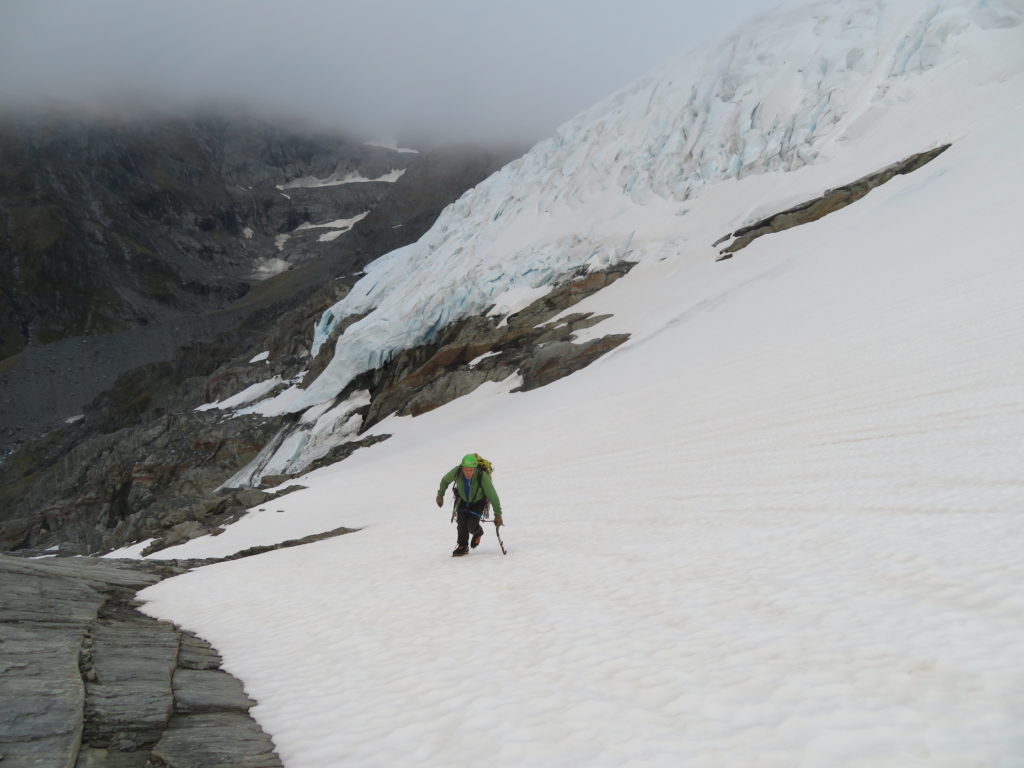
Once we were climbing on the snow, the route finding was pretty easy. The clouds started to burn away, however we ascended above the clouds before they completely disappeared giving a surreal feeling of being in a heavenly domain. Once again, we were soloing this easy terrain with the snow conditions good and firm.

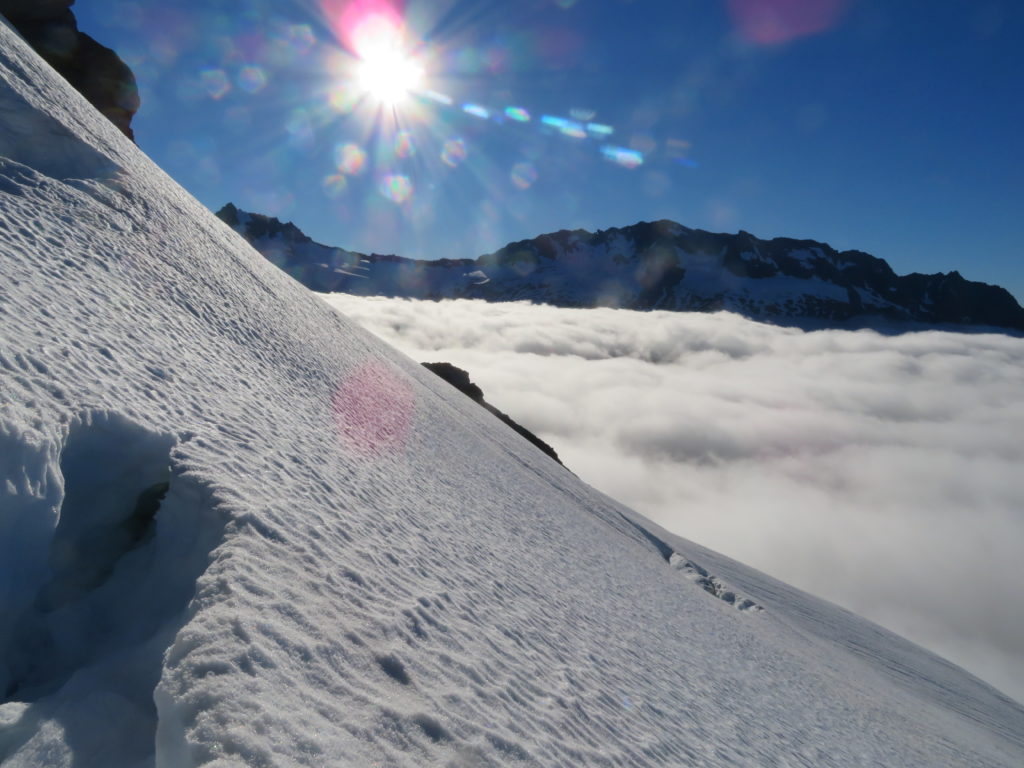
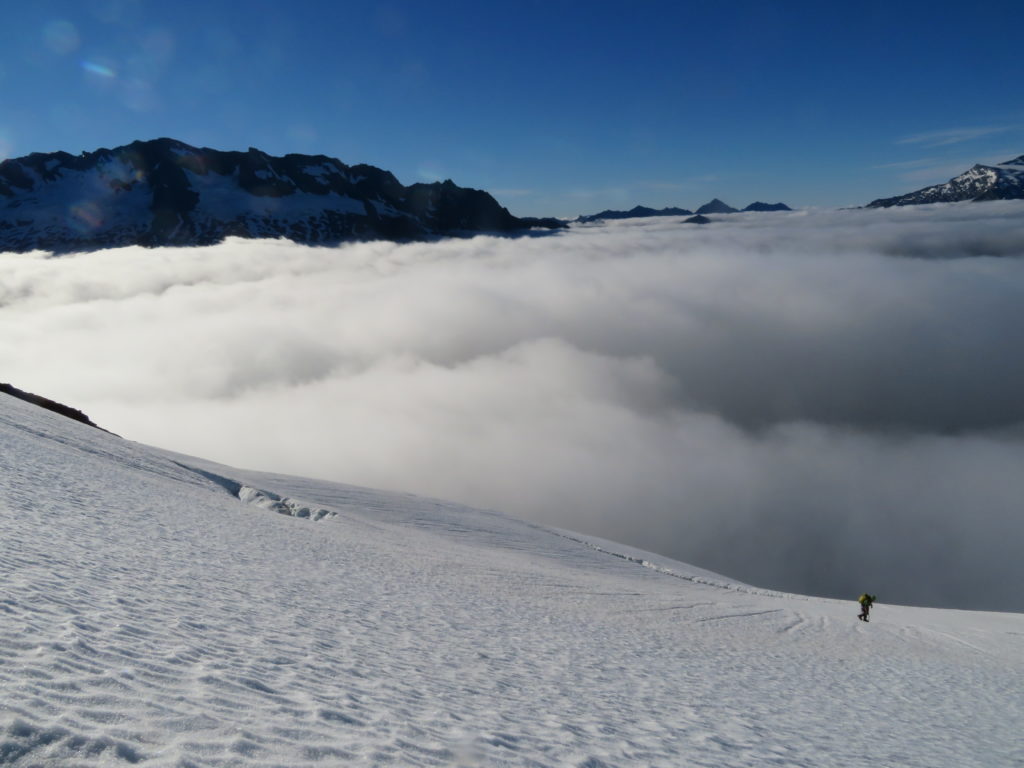
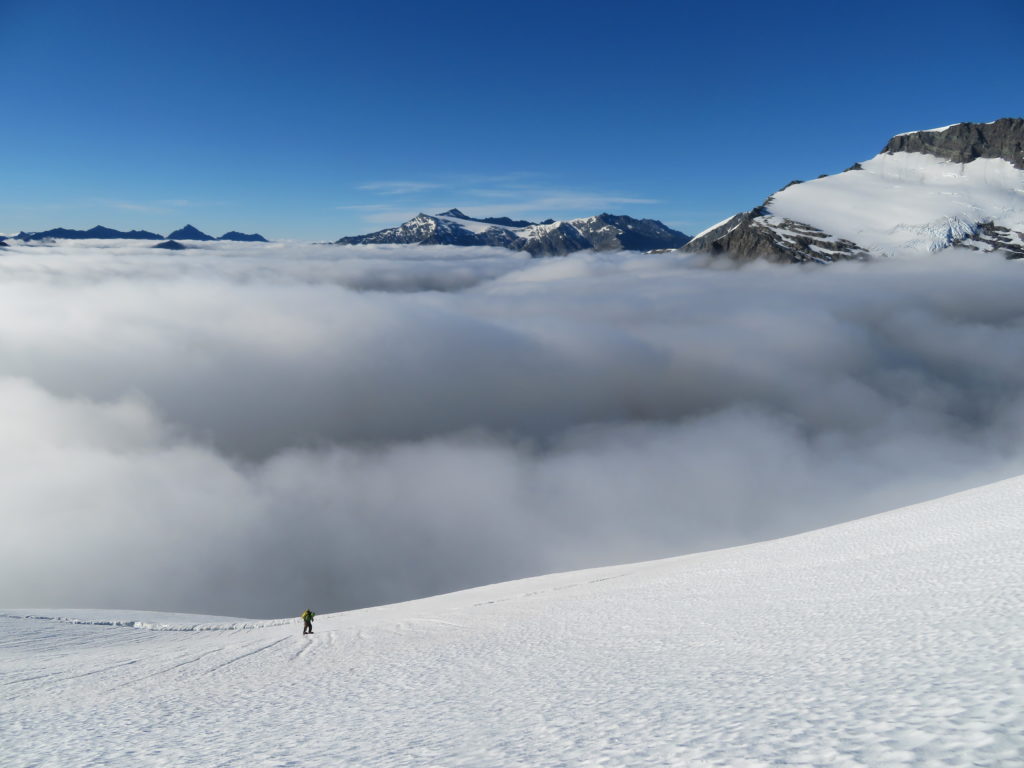
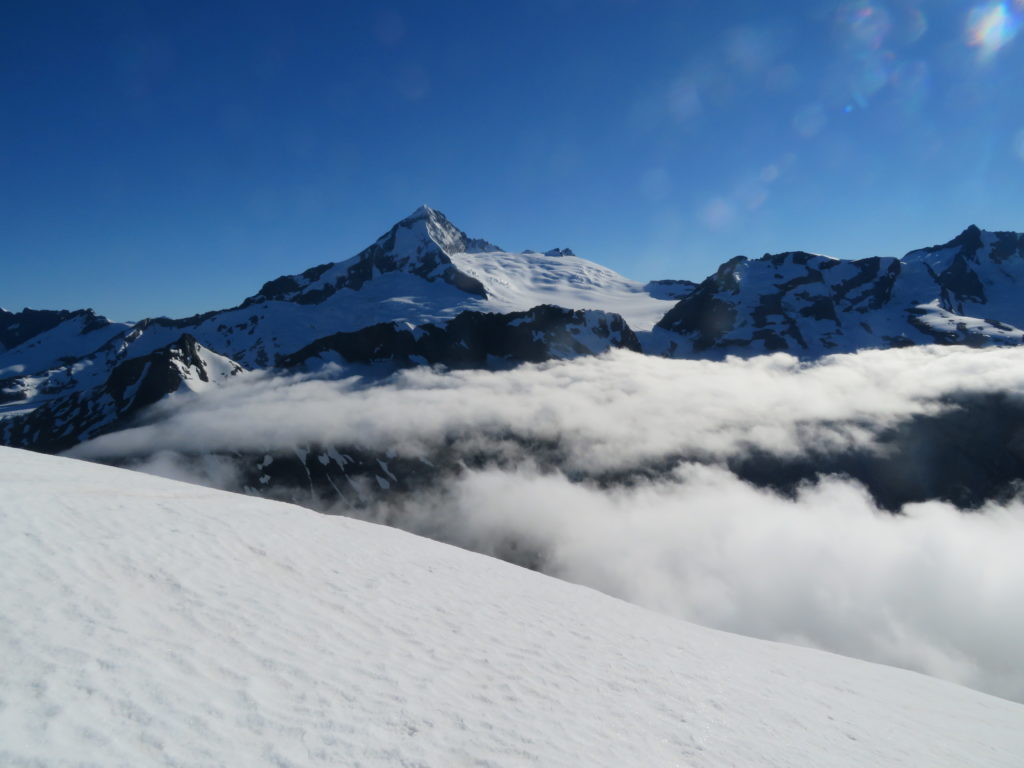
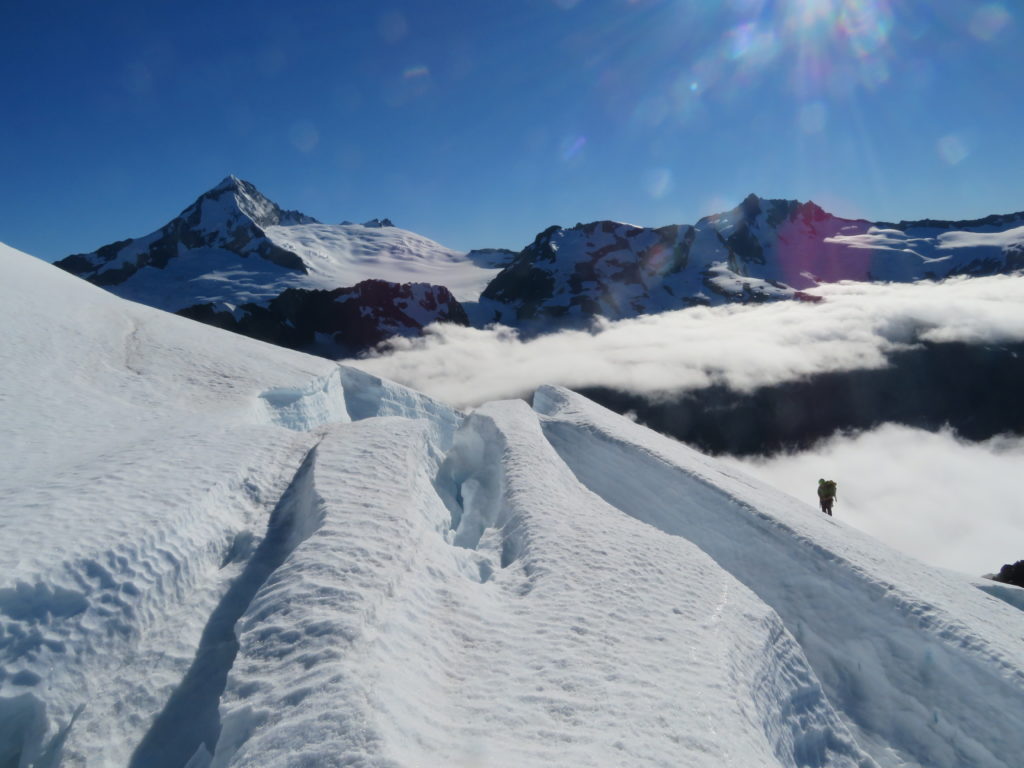
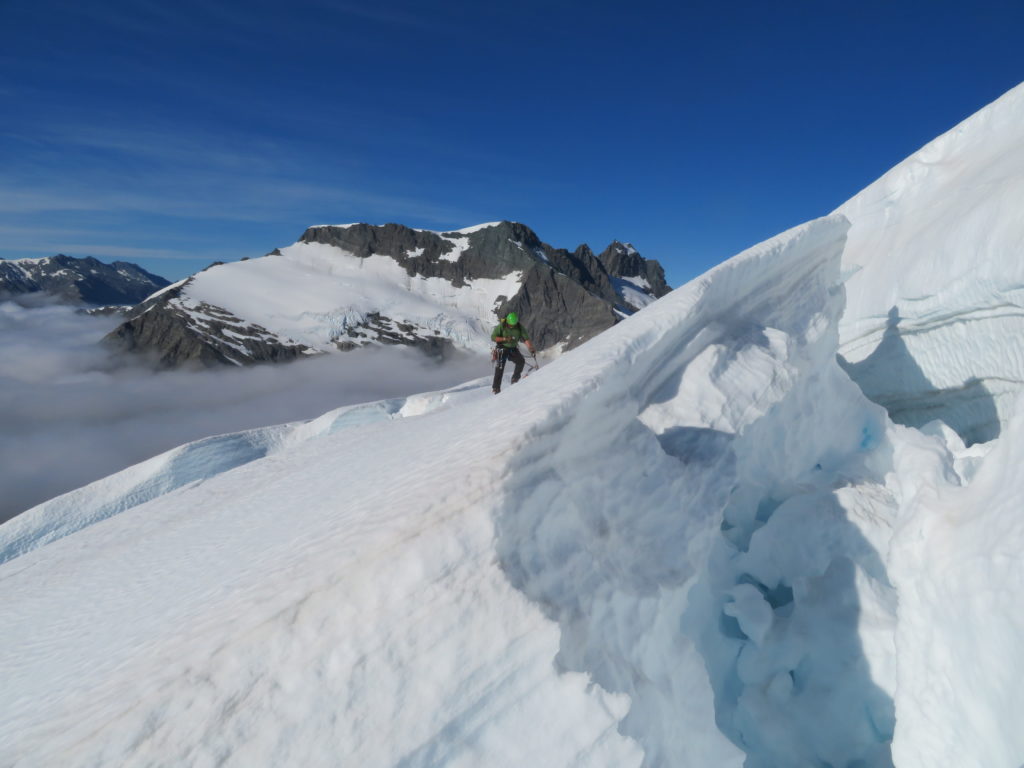
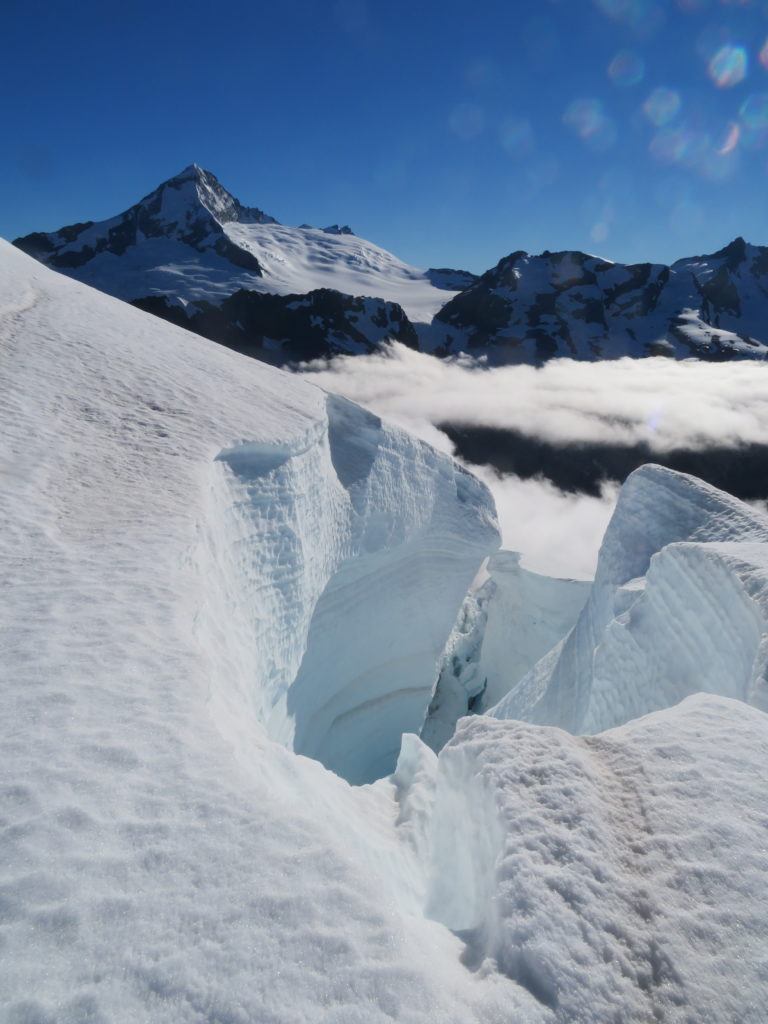
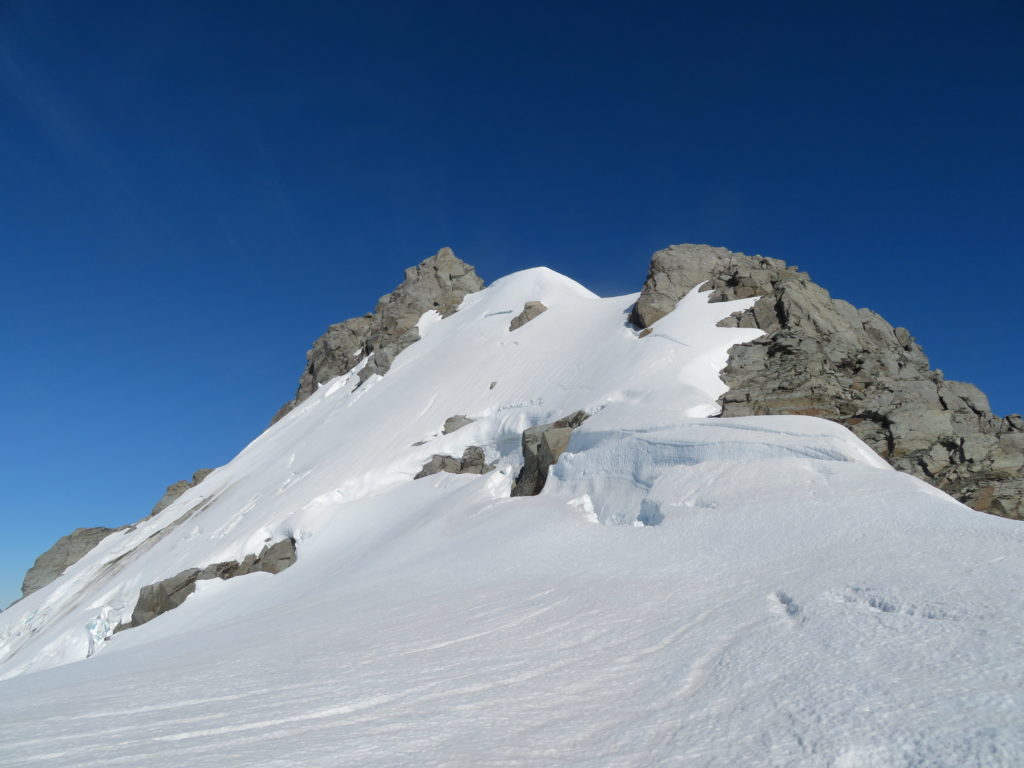
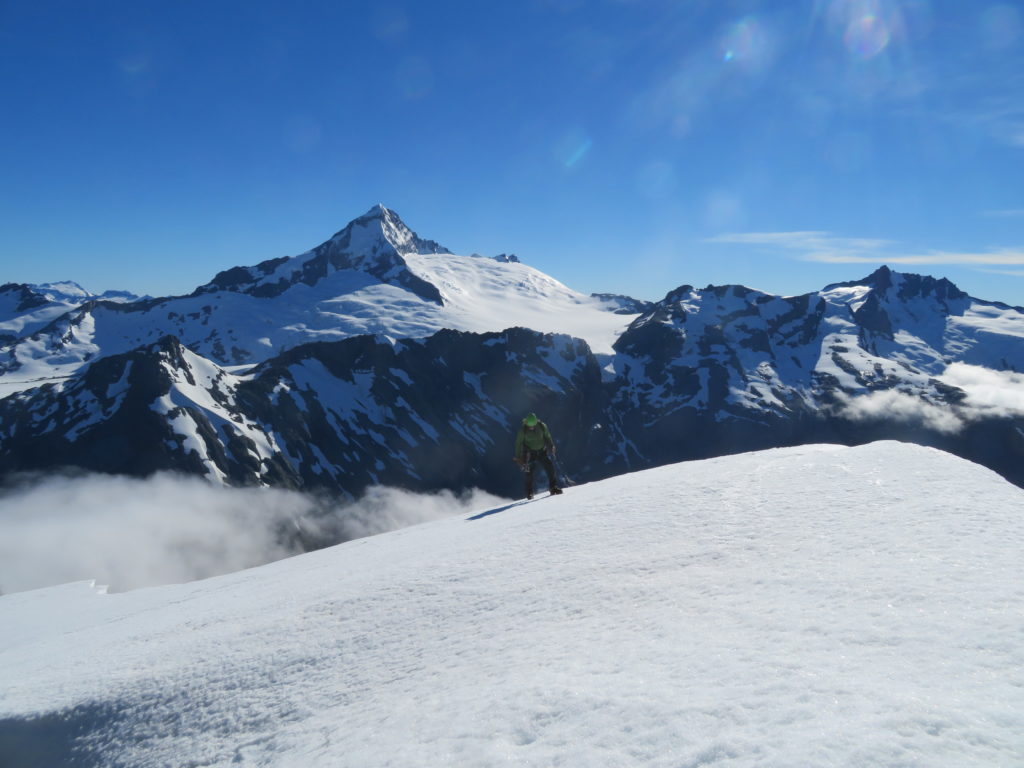


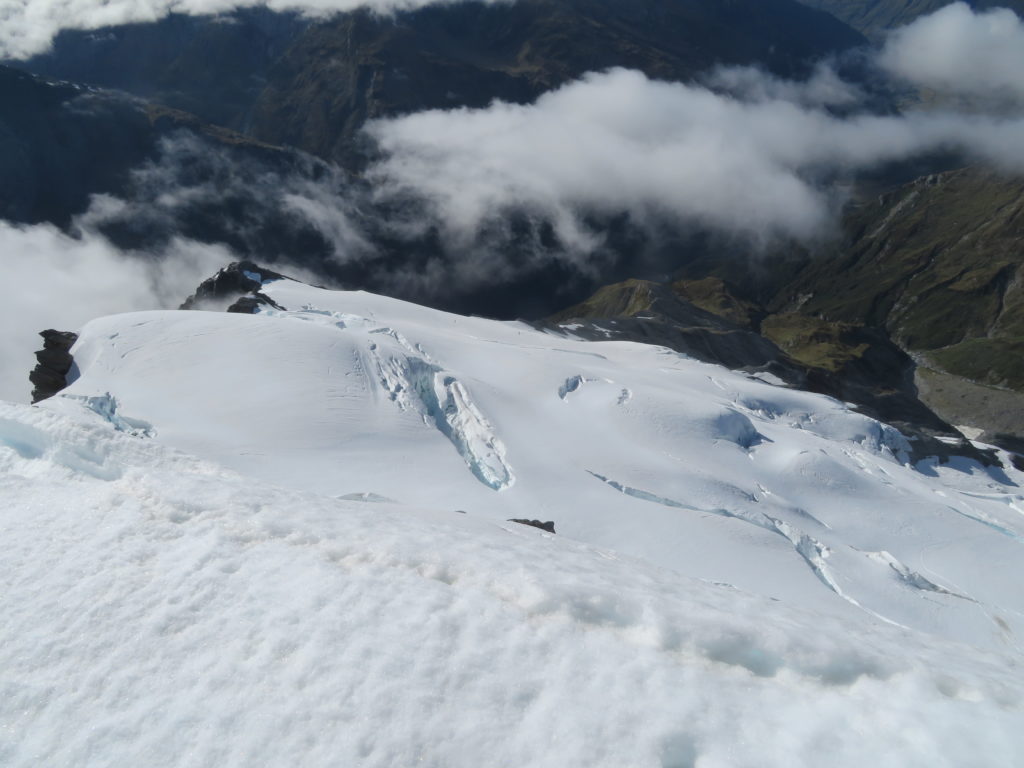

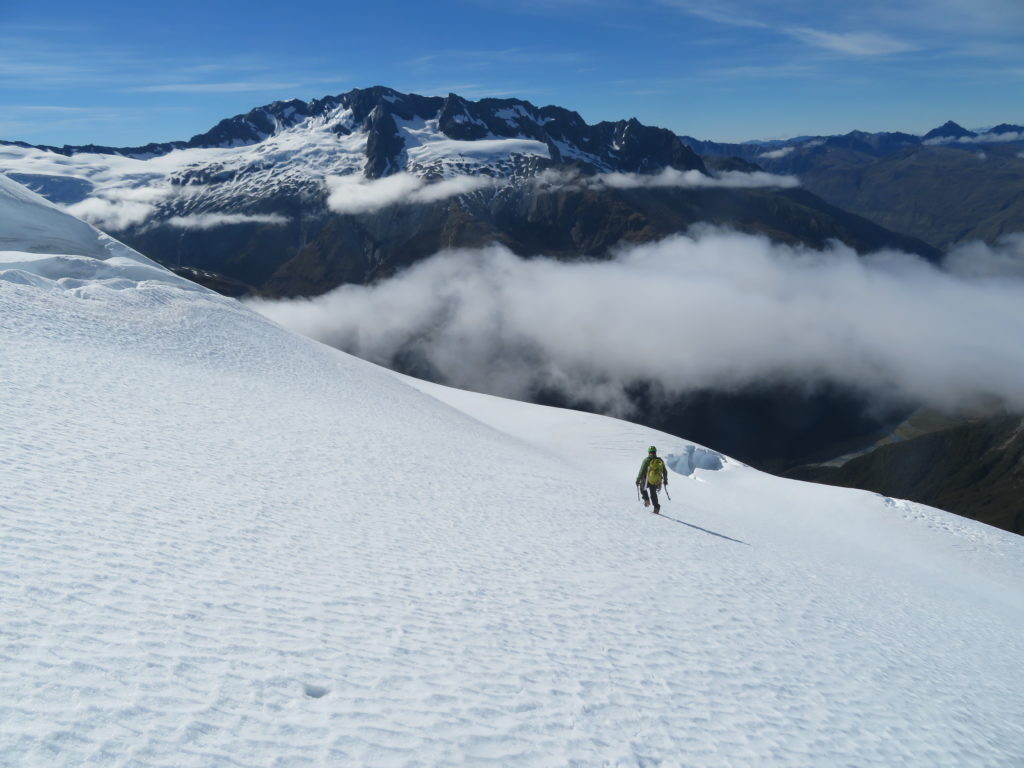
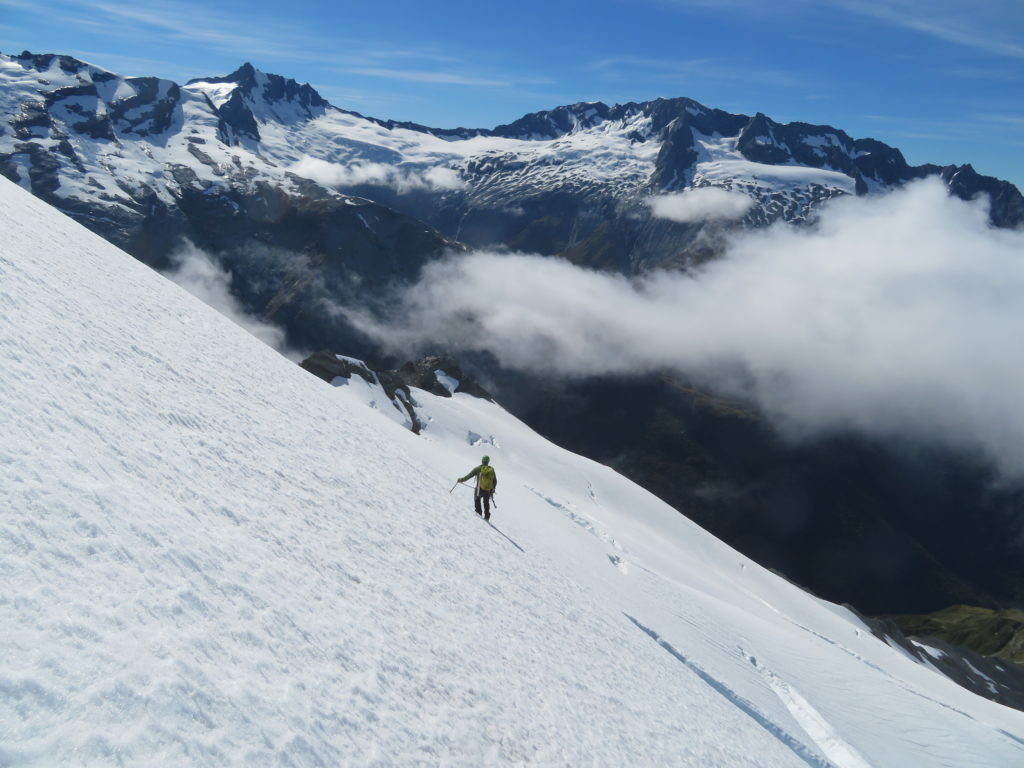
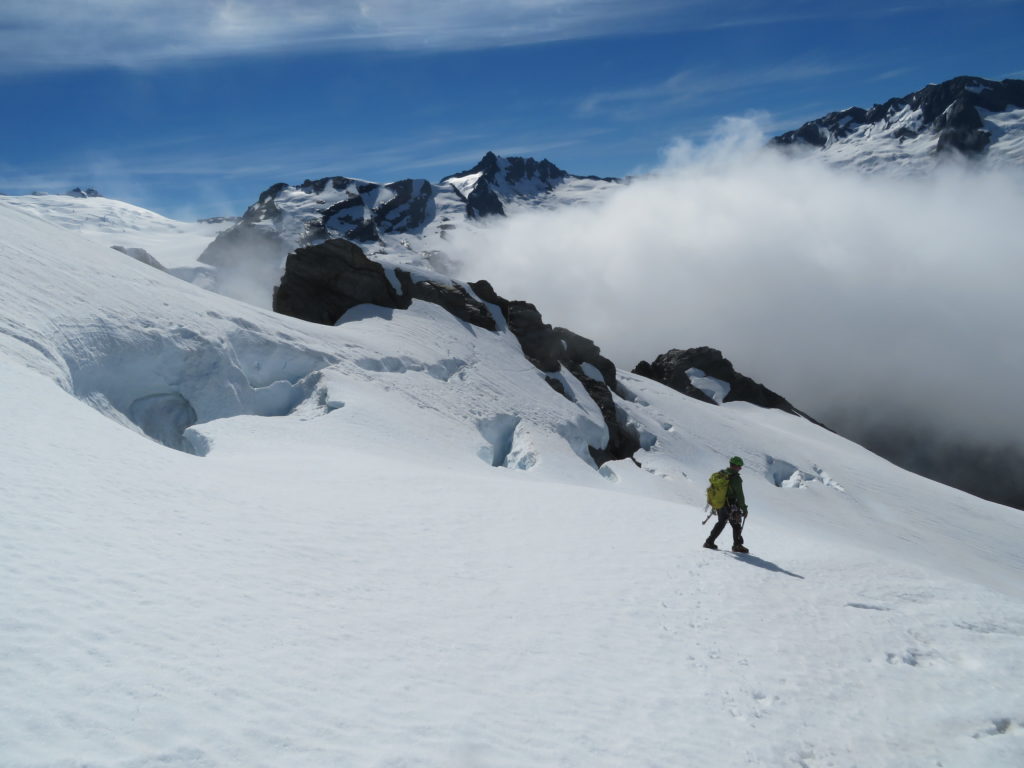

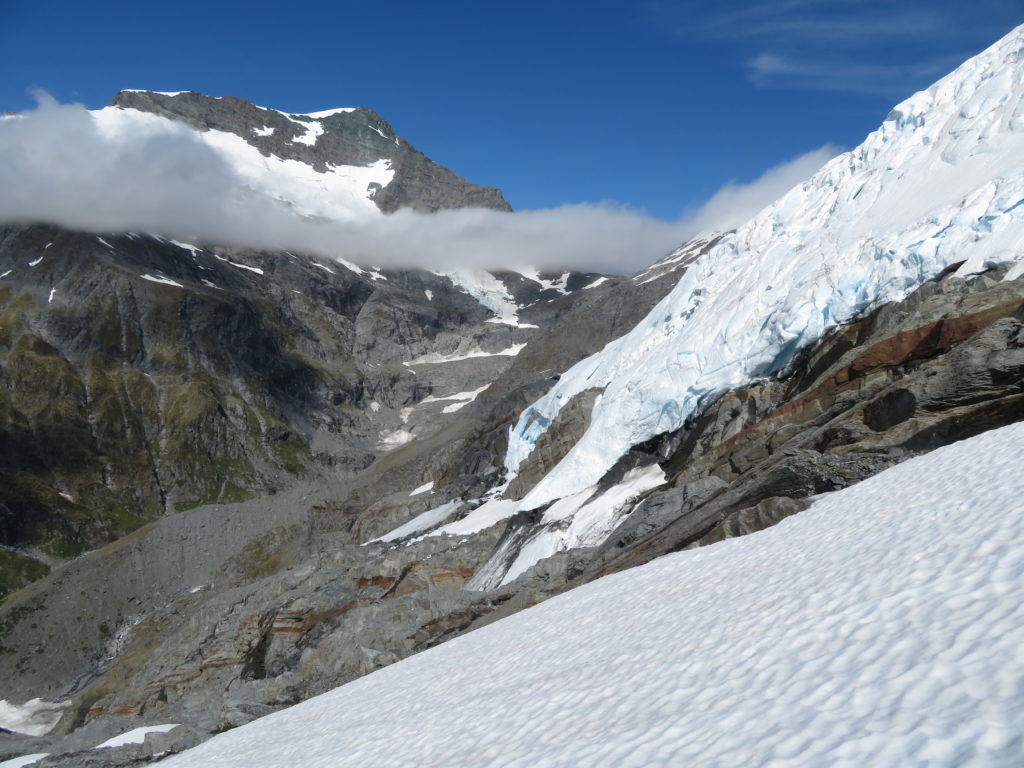

The remainder of our time was spent resting and recovering, and catching up with Rob’s lovely friends. I do hope we can stay in touch, I love the Kiwi attitude and outdoor lifestyle, climbing and mountaineering is a way of life for many of the locals, not just something you do once a year.
Climbing with Rob was amazing – he was there to push me to a new level, not to hold my hand like a guide. I think we certainly did this and I’m feeling great as a result, with a new level of confidence and understanding of alpinism. Mt Green was the highlight – psychologically, the exposure and commitment pushed me to a new level of self-reliance and self-belief. I hope this will put me in a good position for some larger and more remote trips, though I’m conscious that I still need to keep developing my skills and building experience. I look forward to the next adventure!
“The only way to improve is to step out of you comfort zone – life begins where your comfort zones ends”
